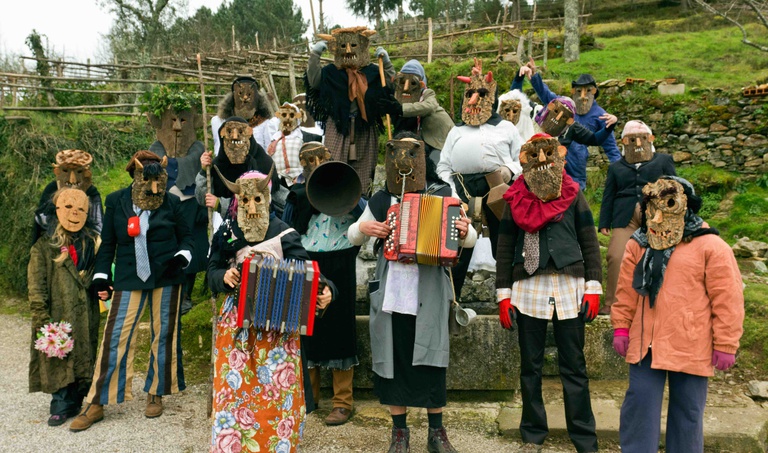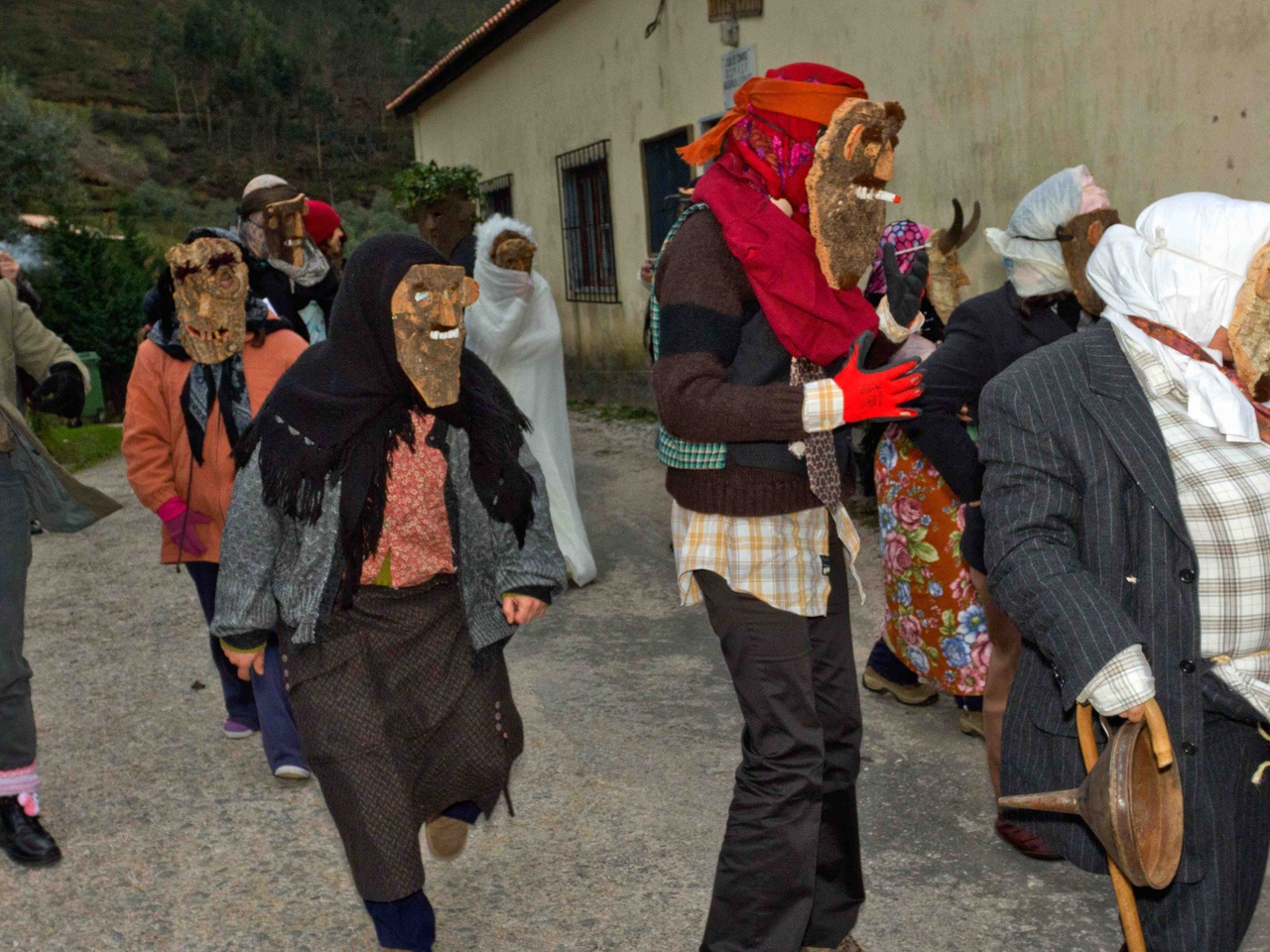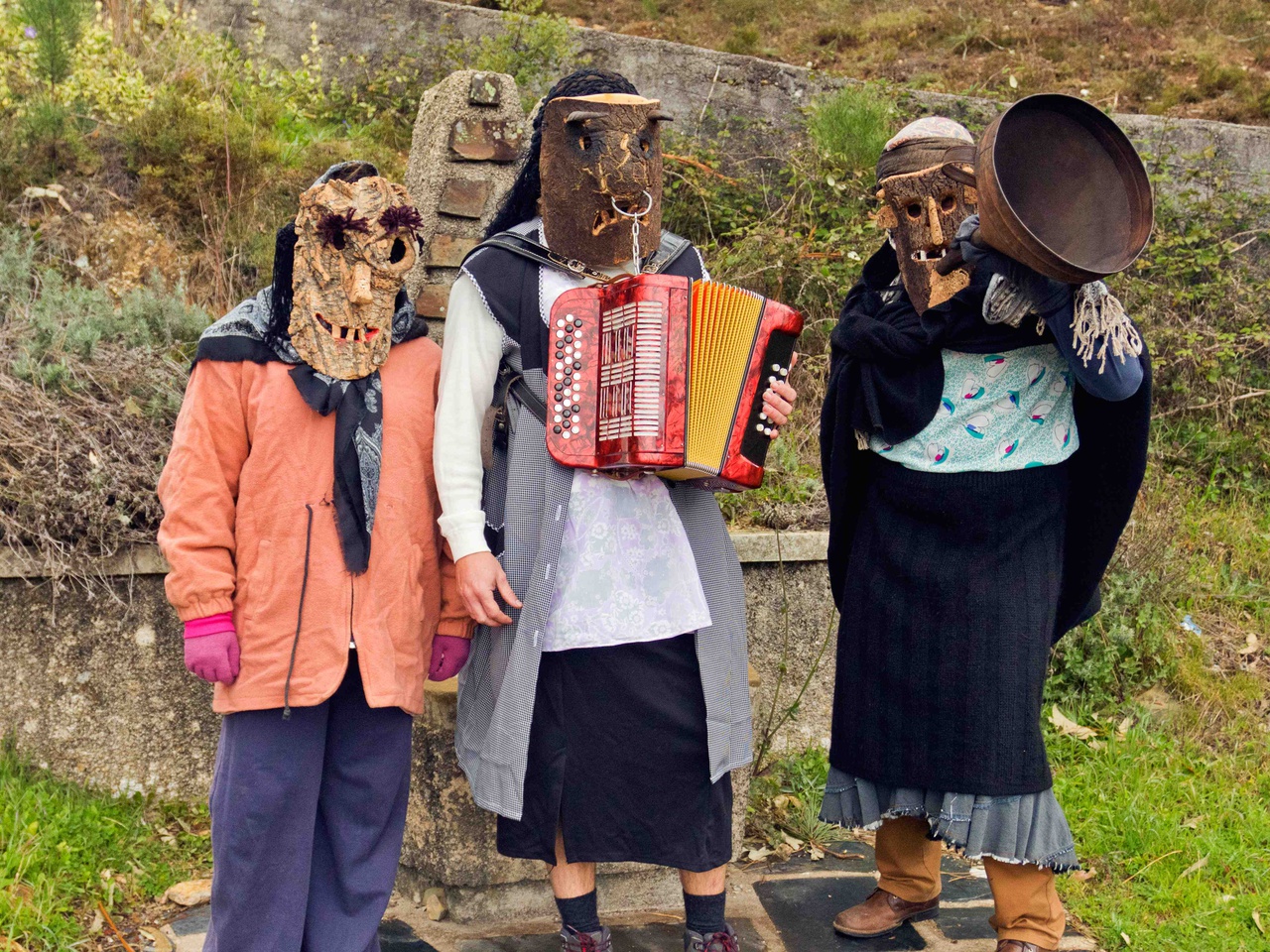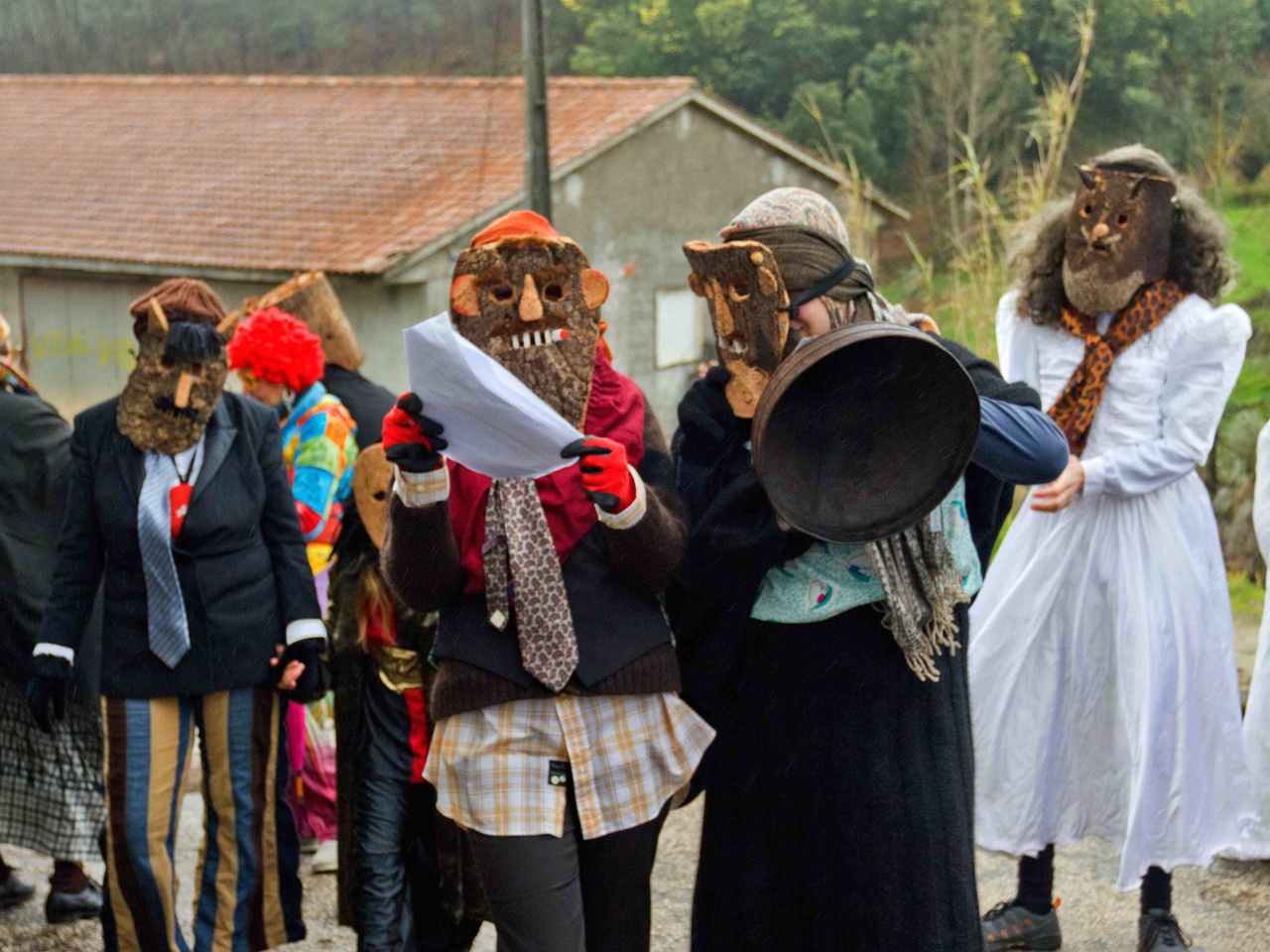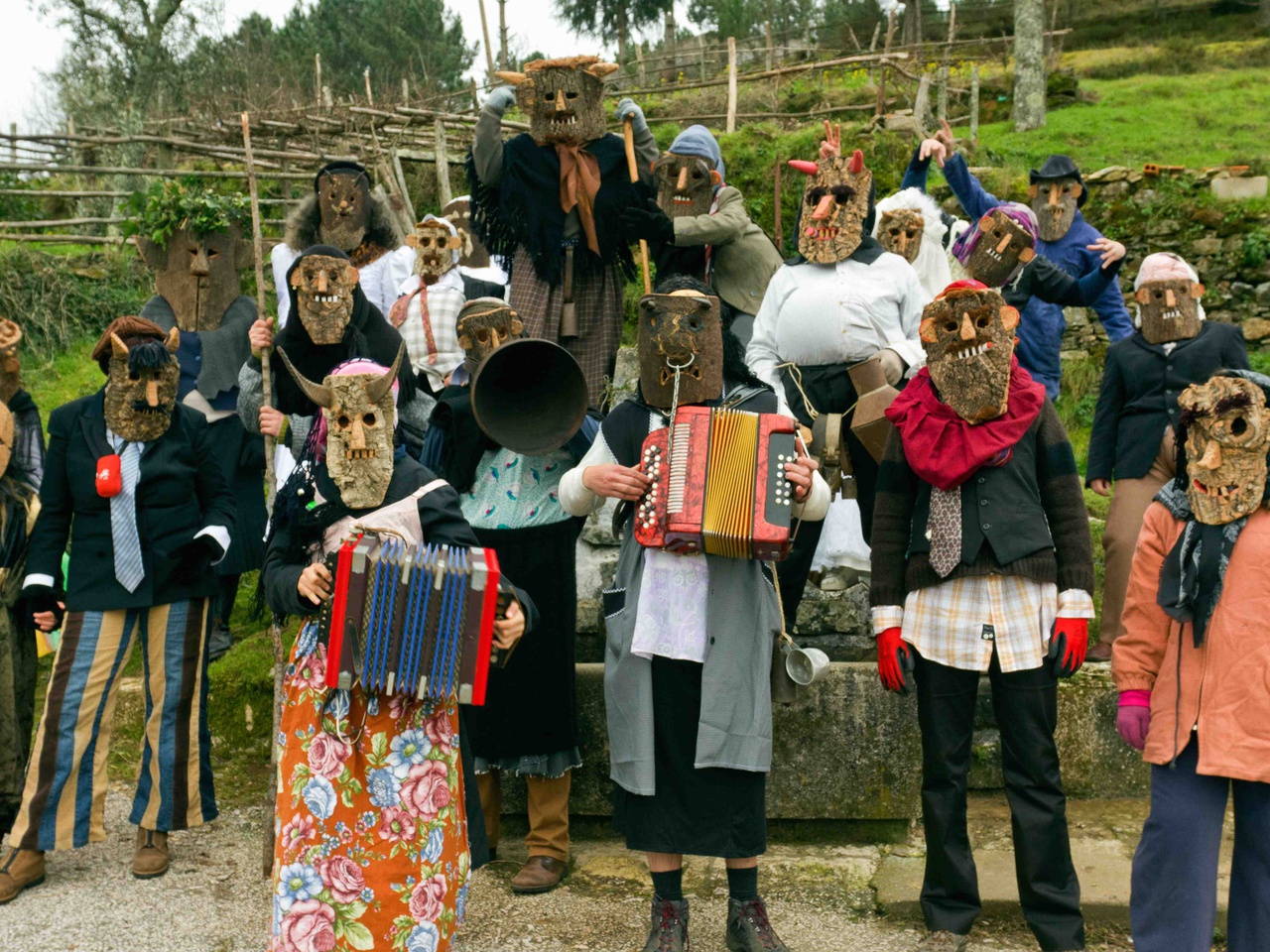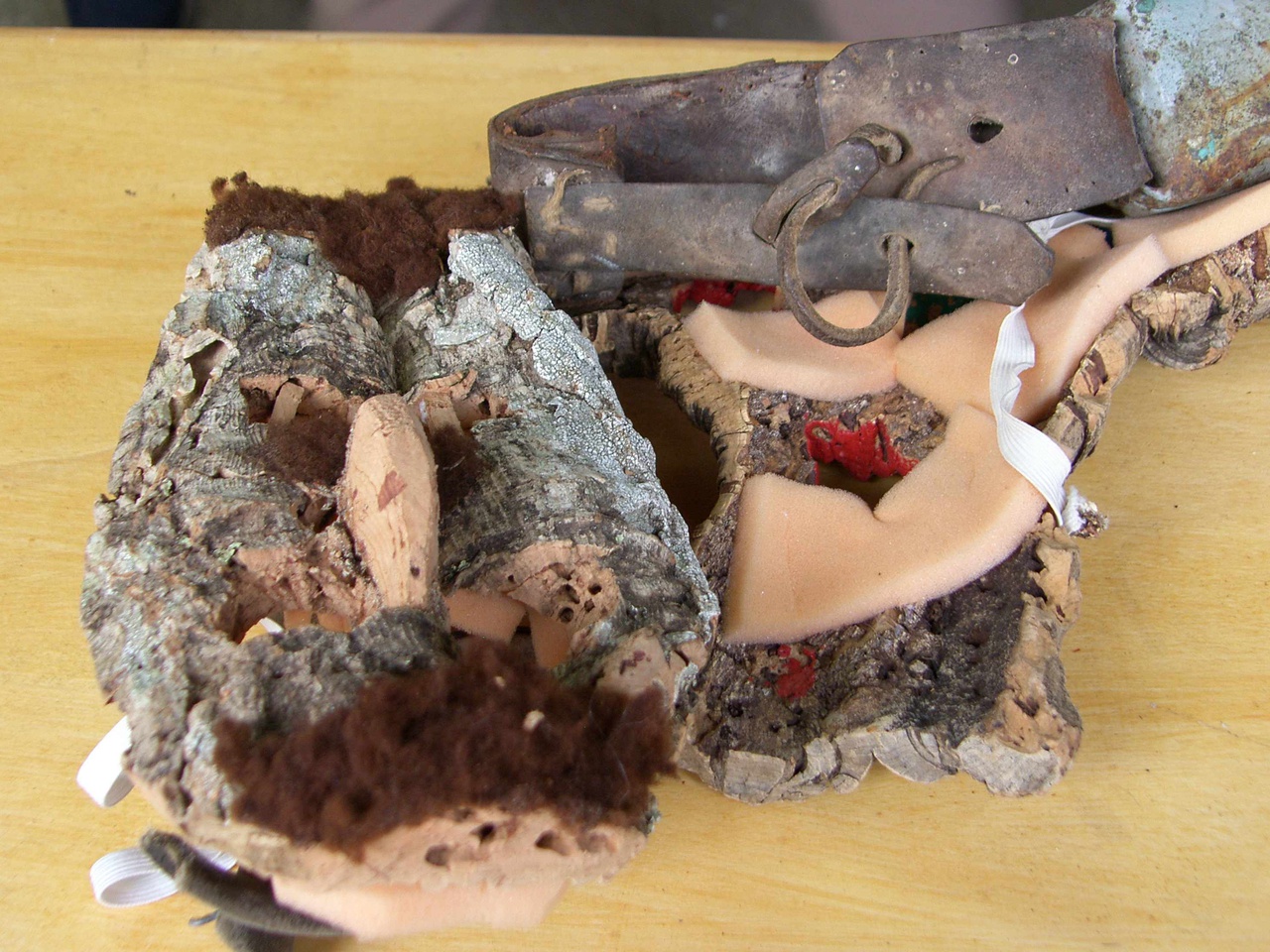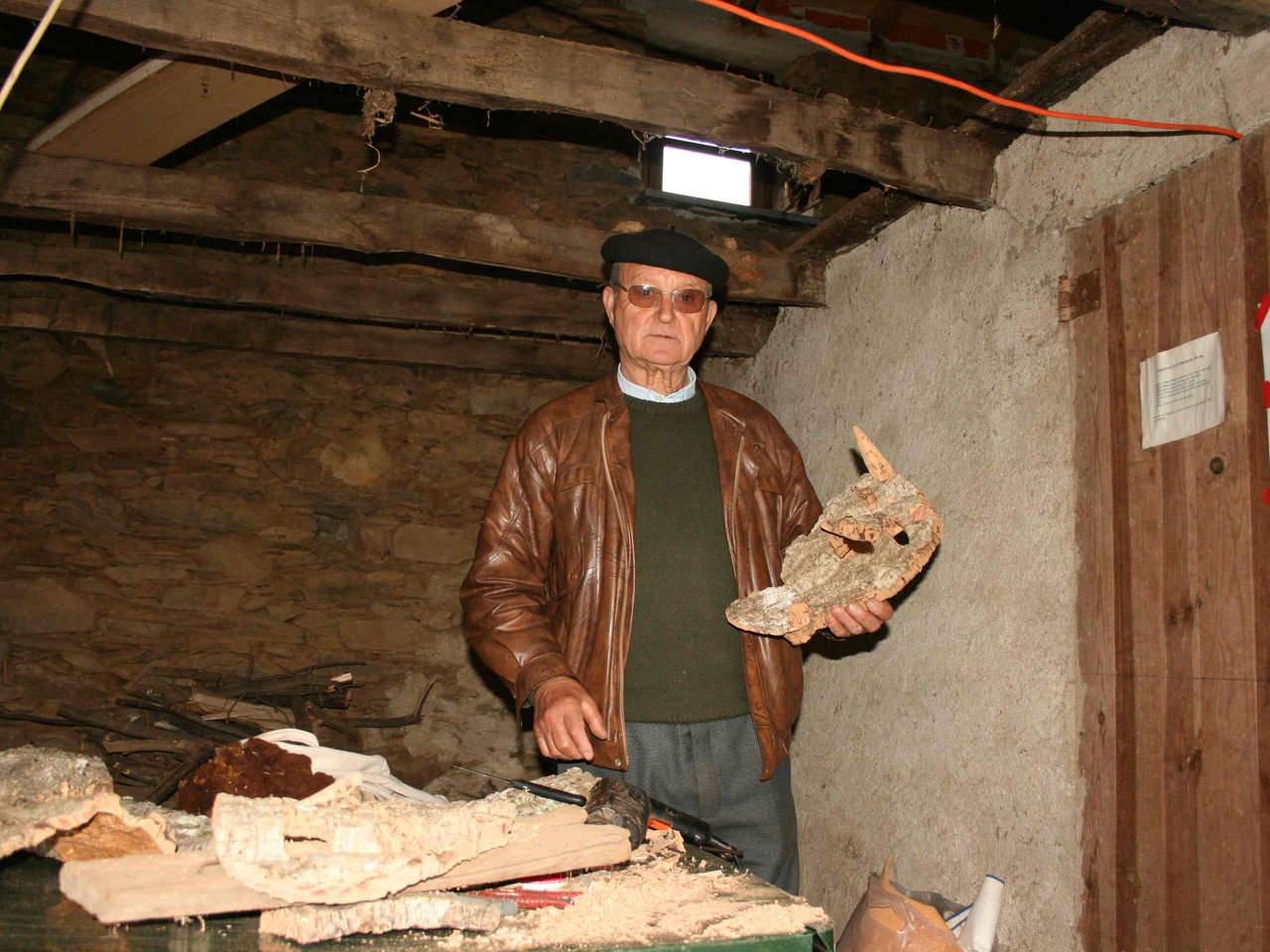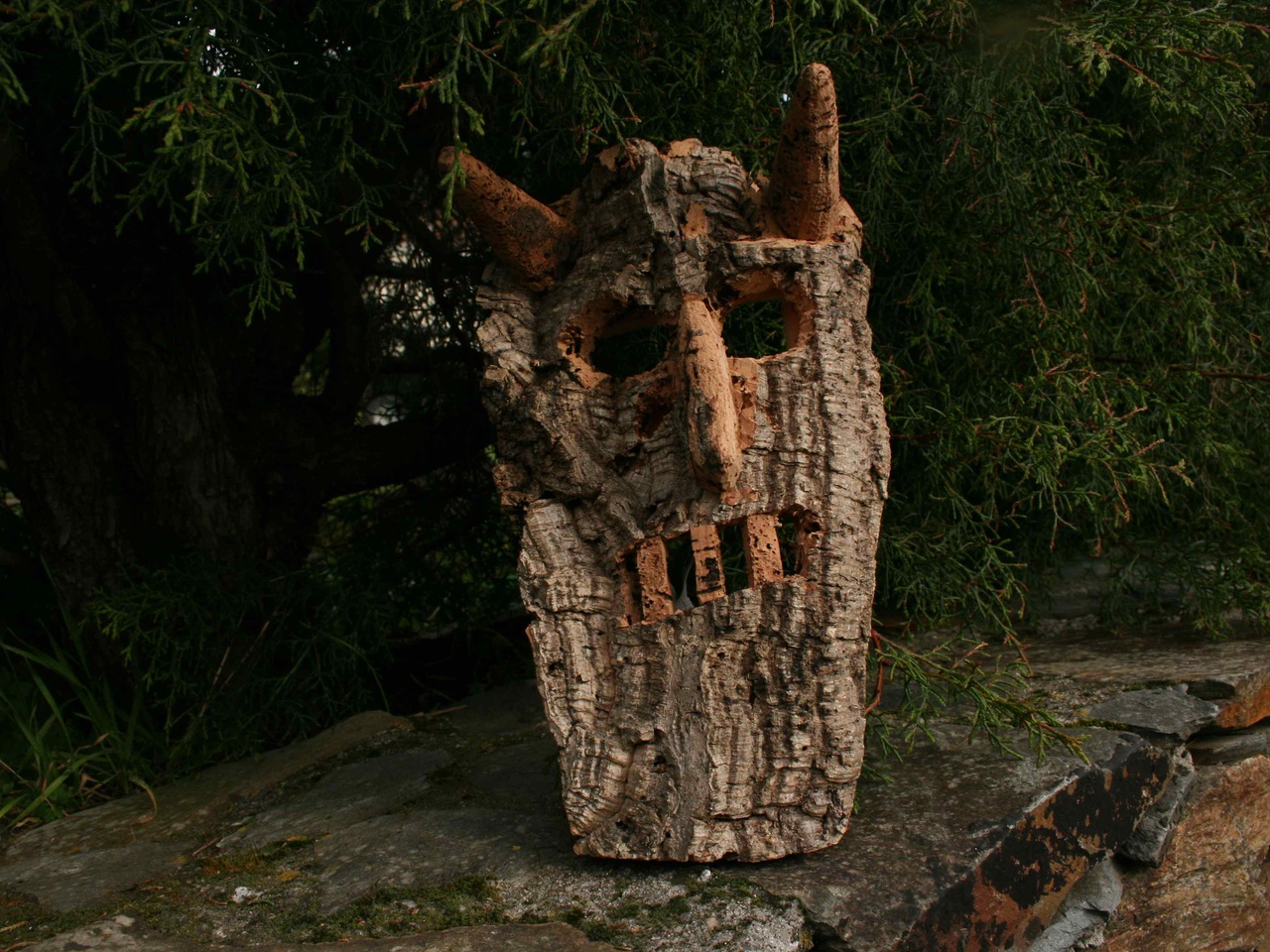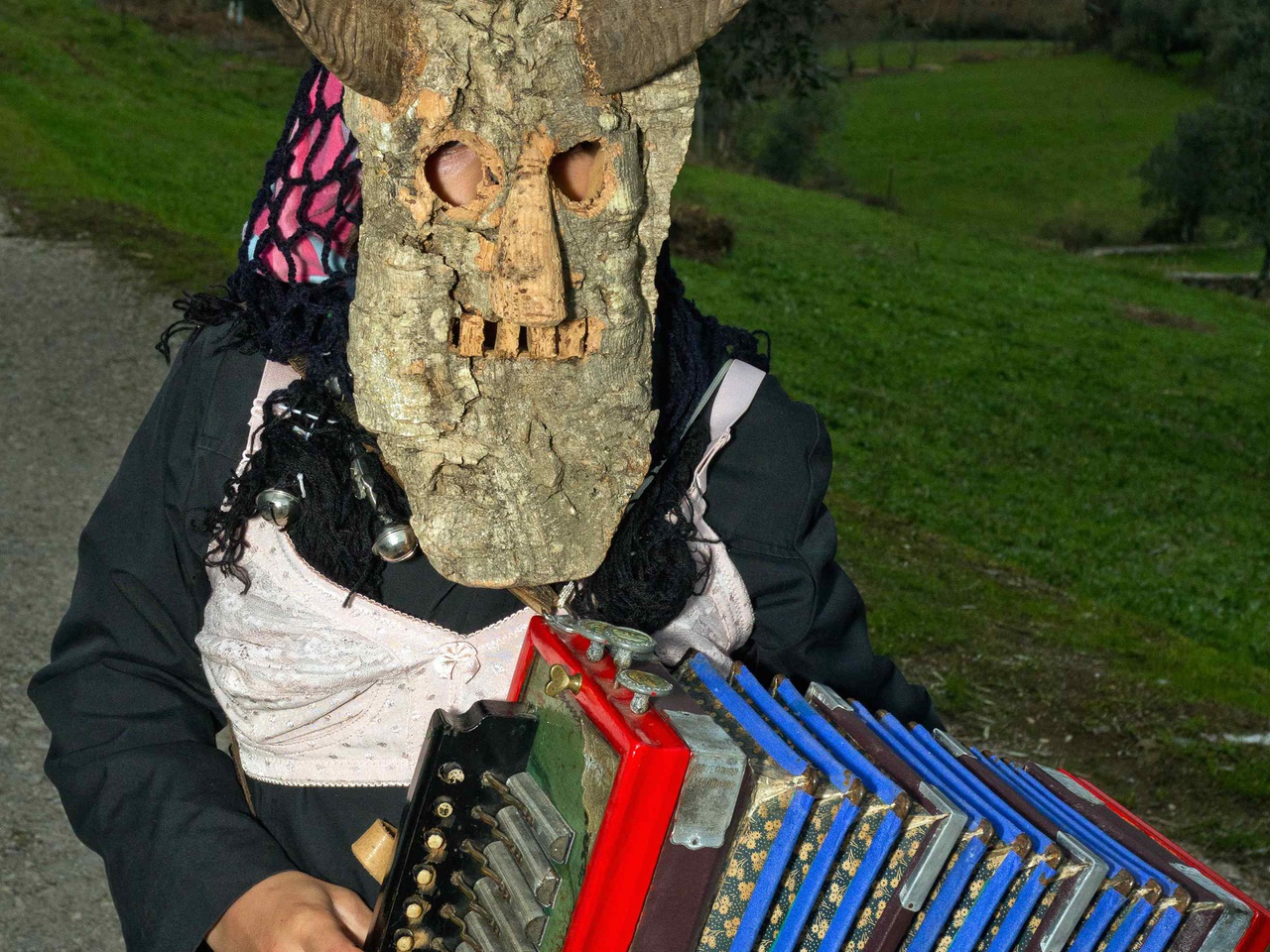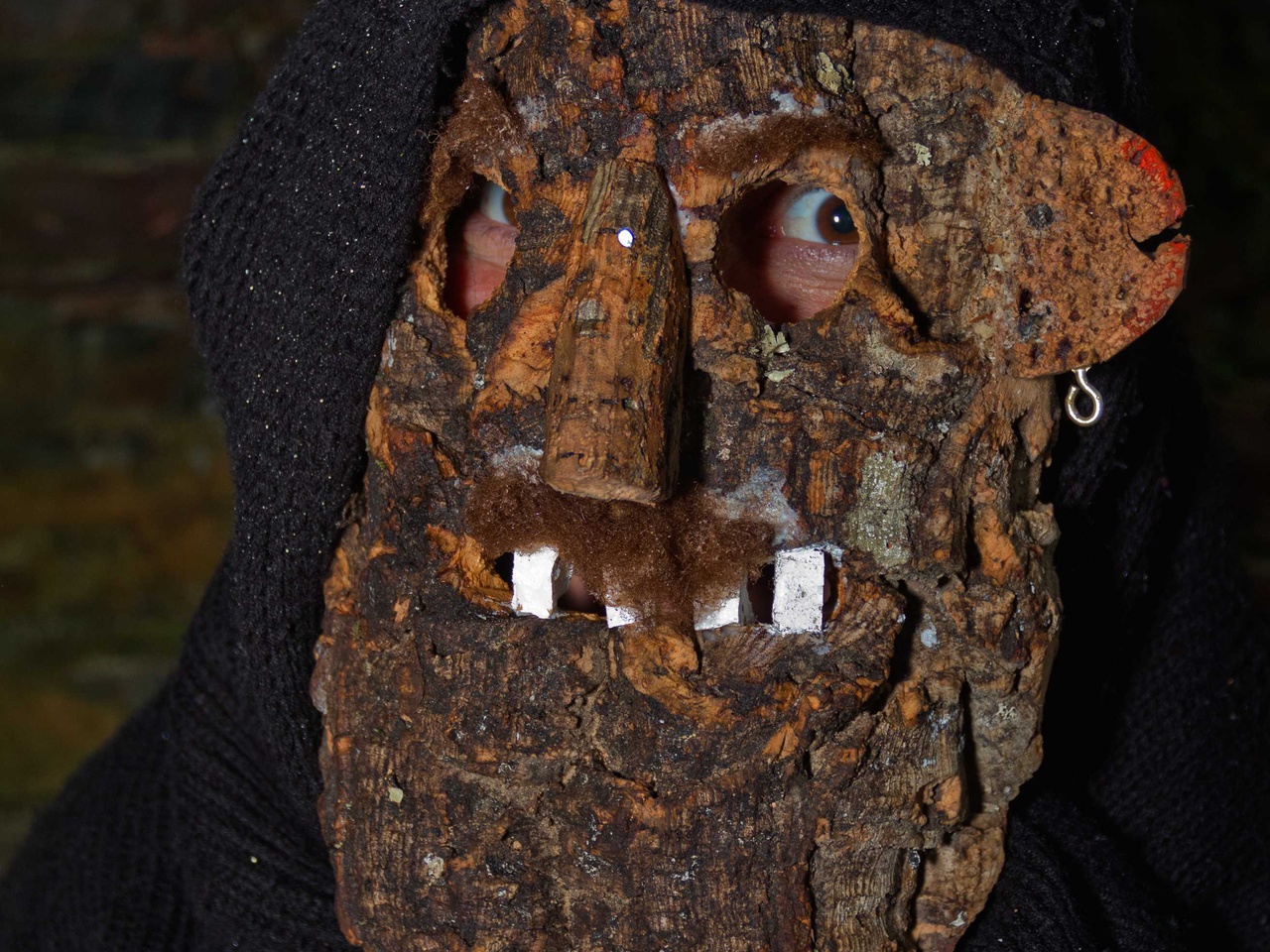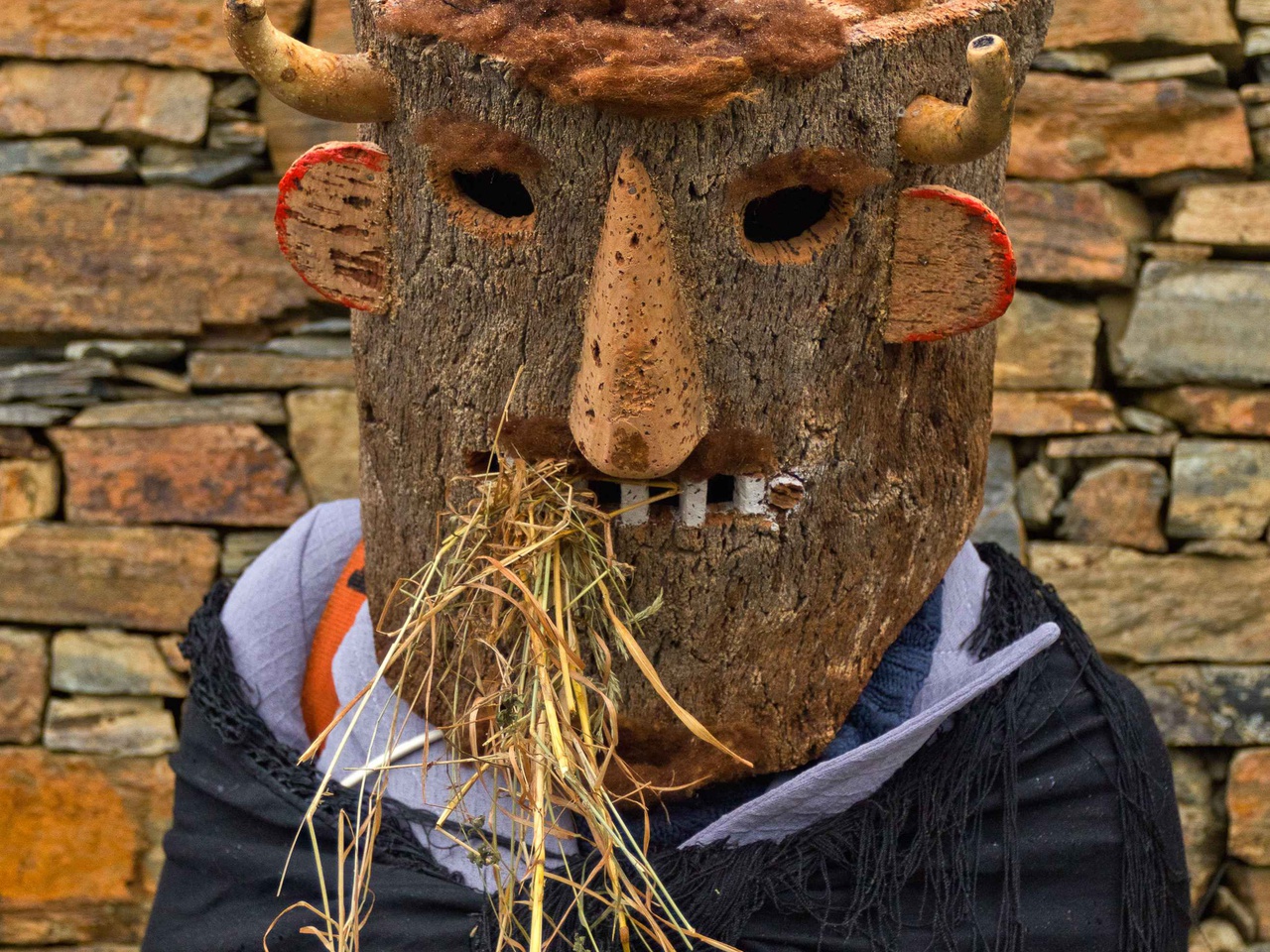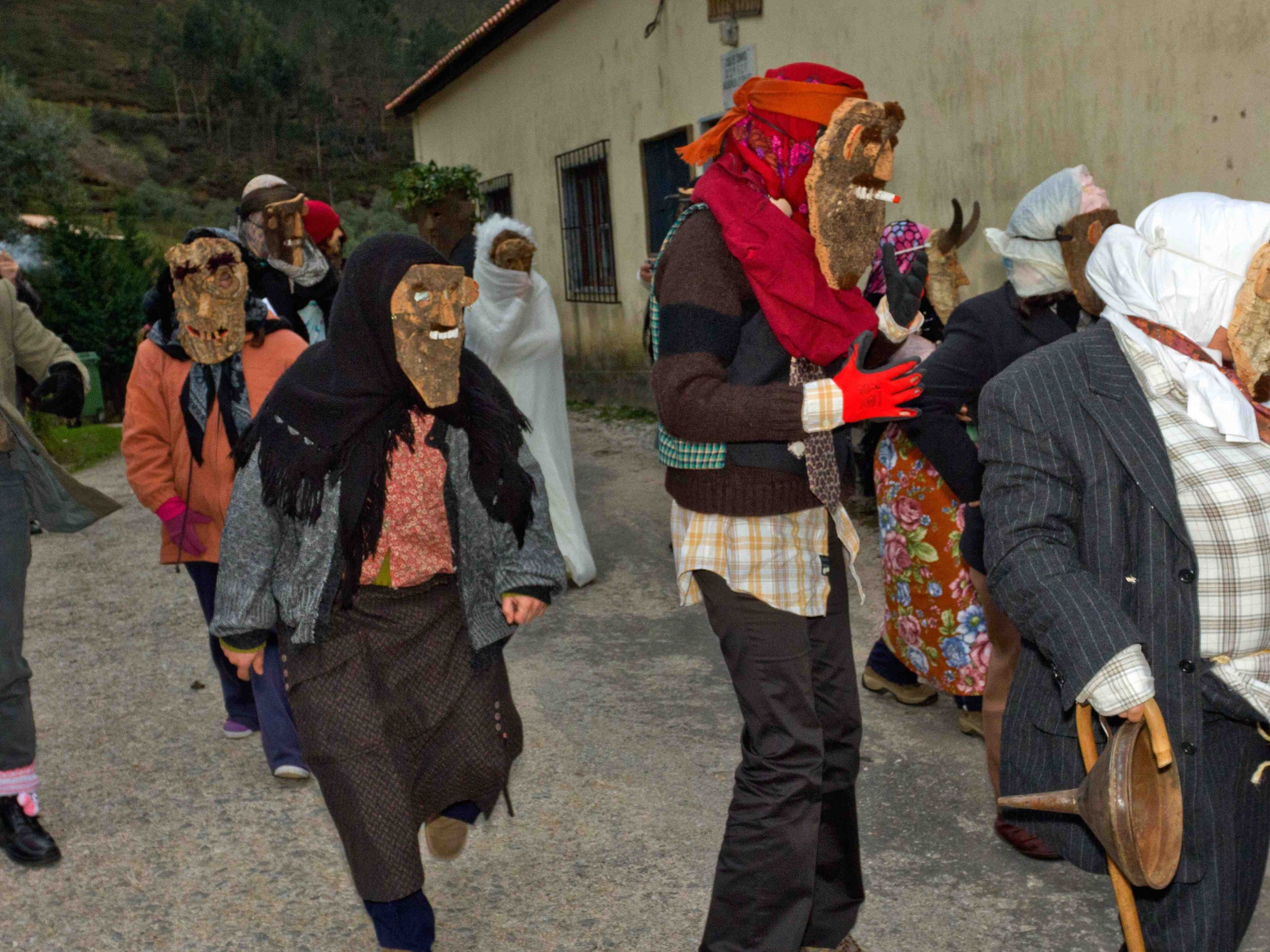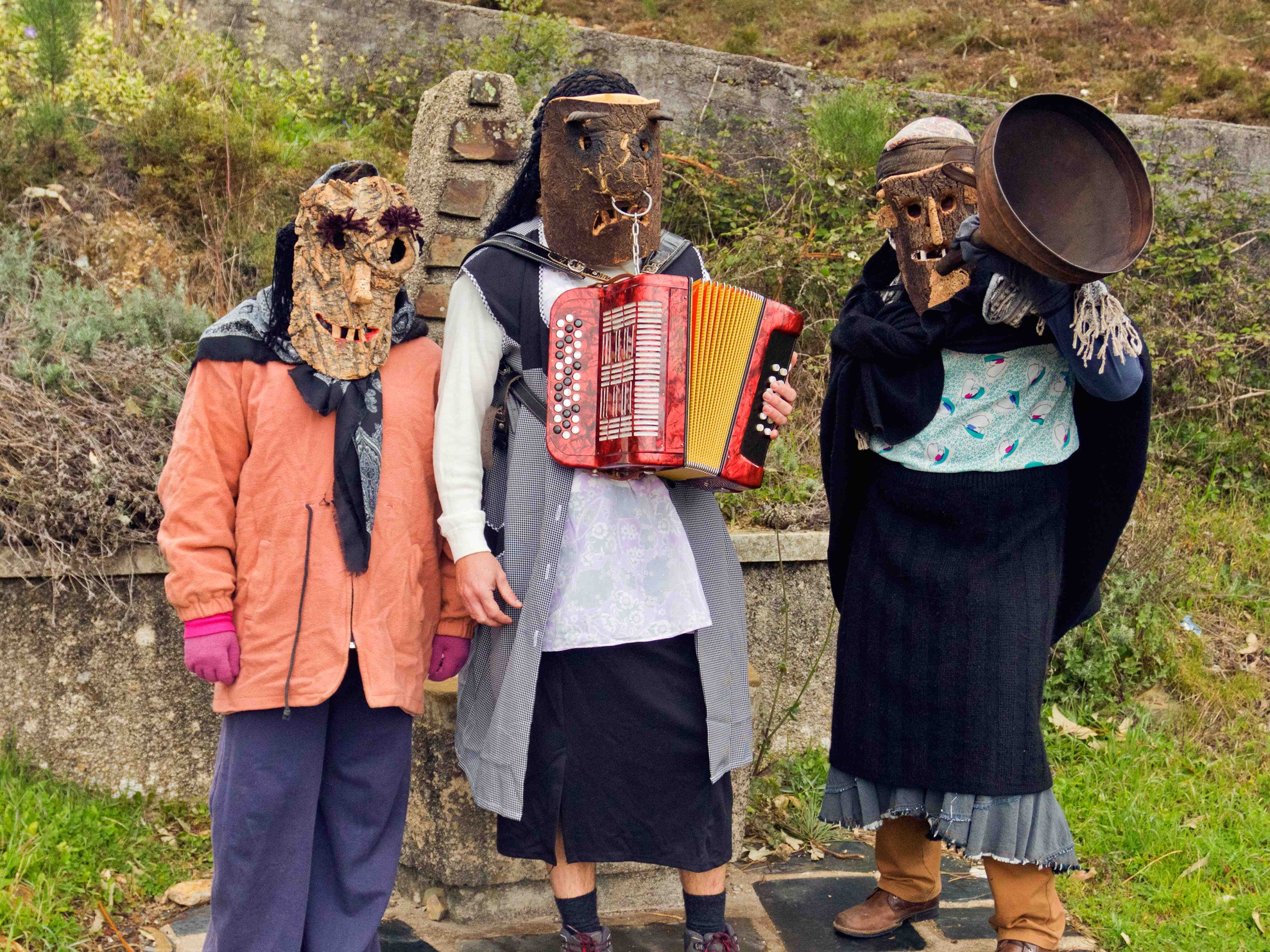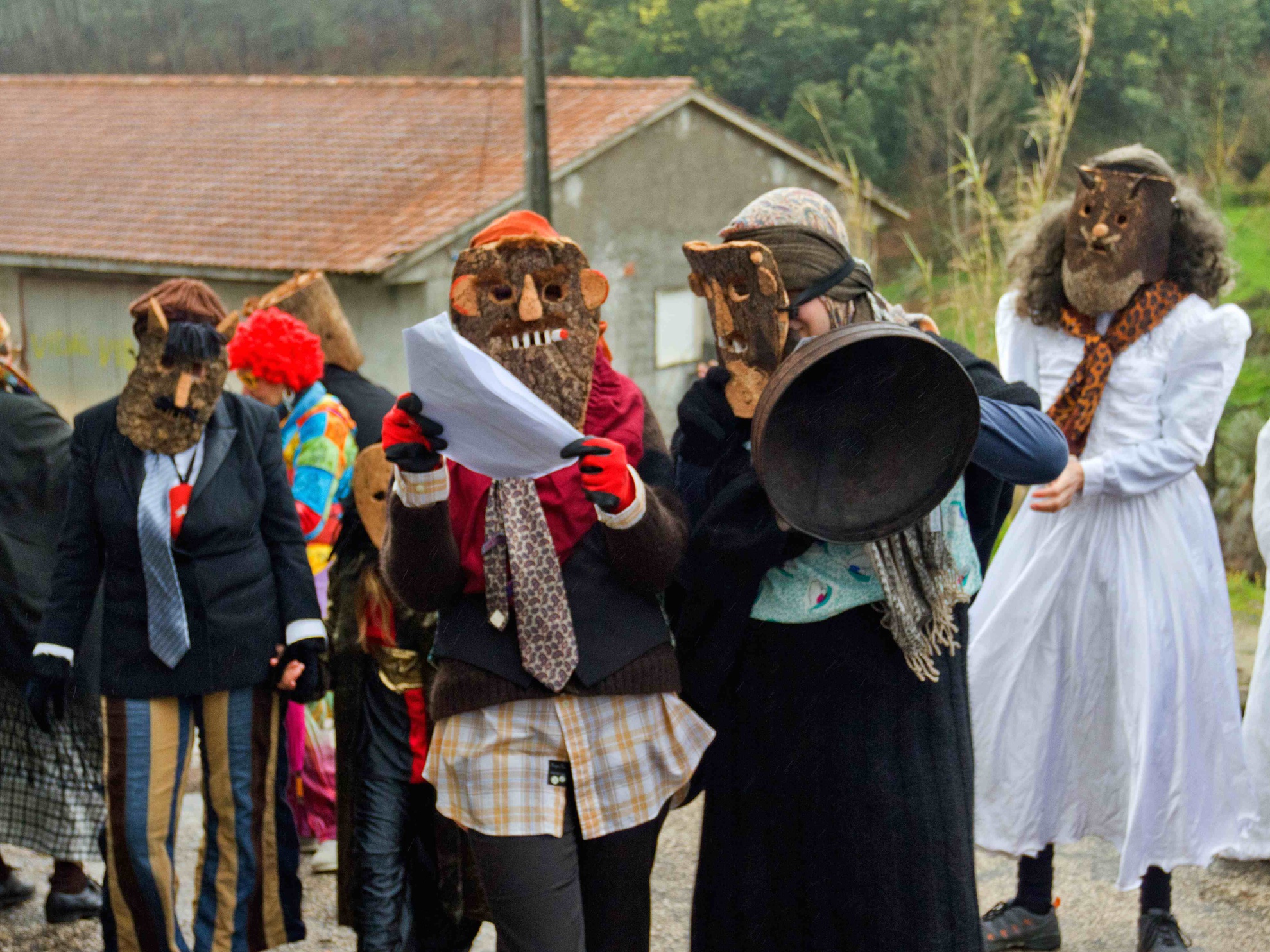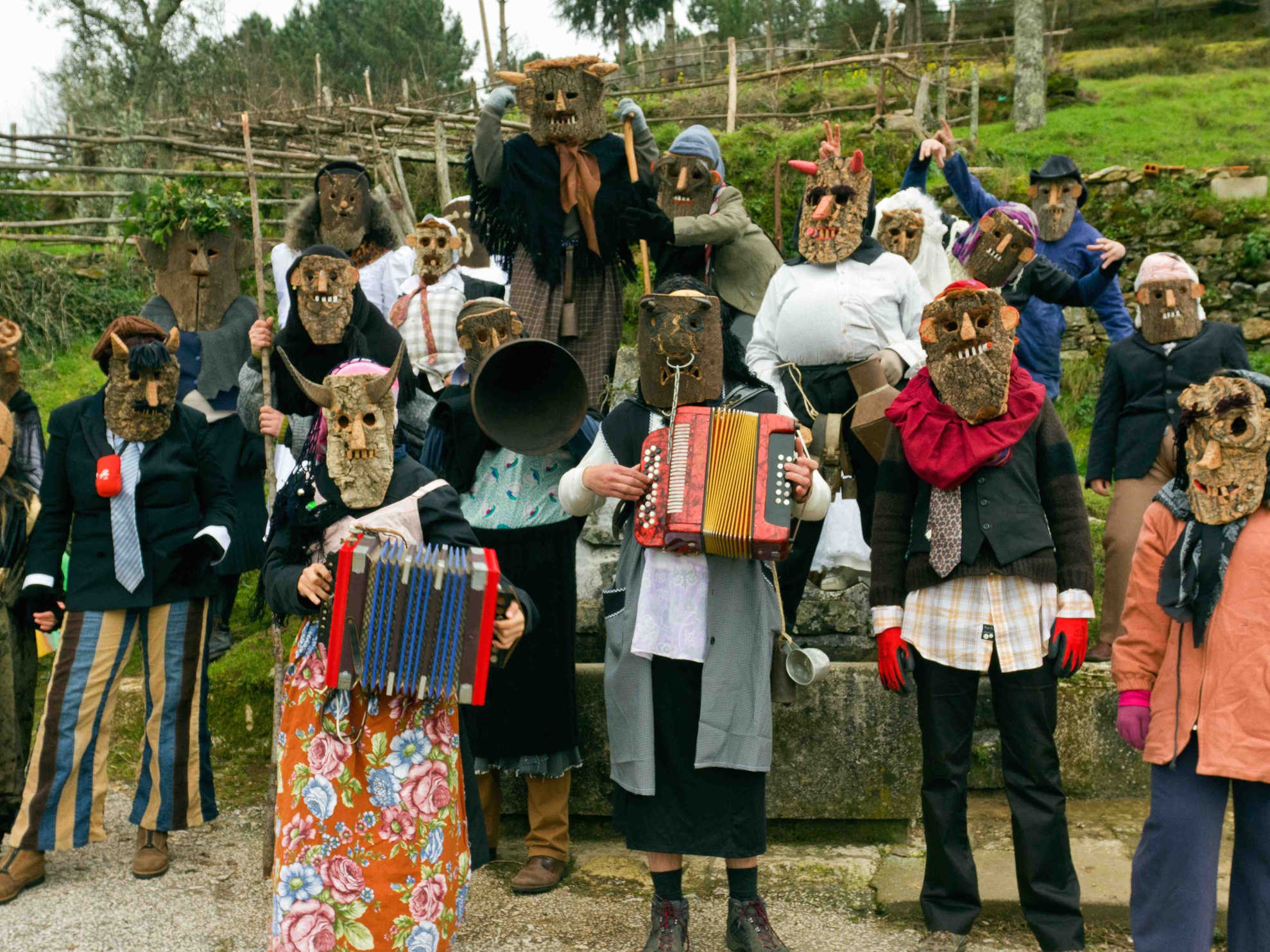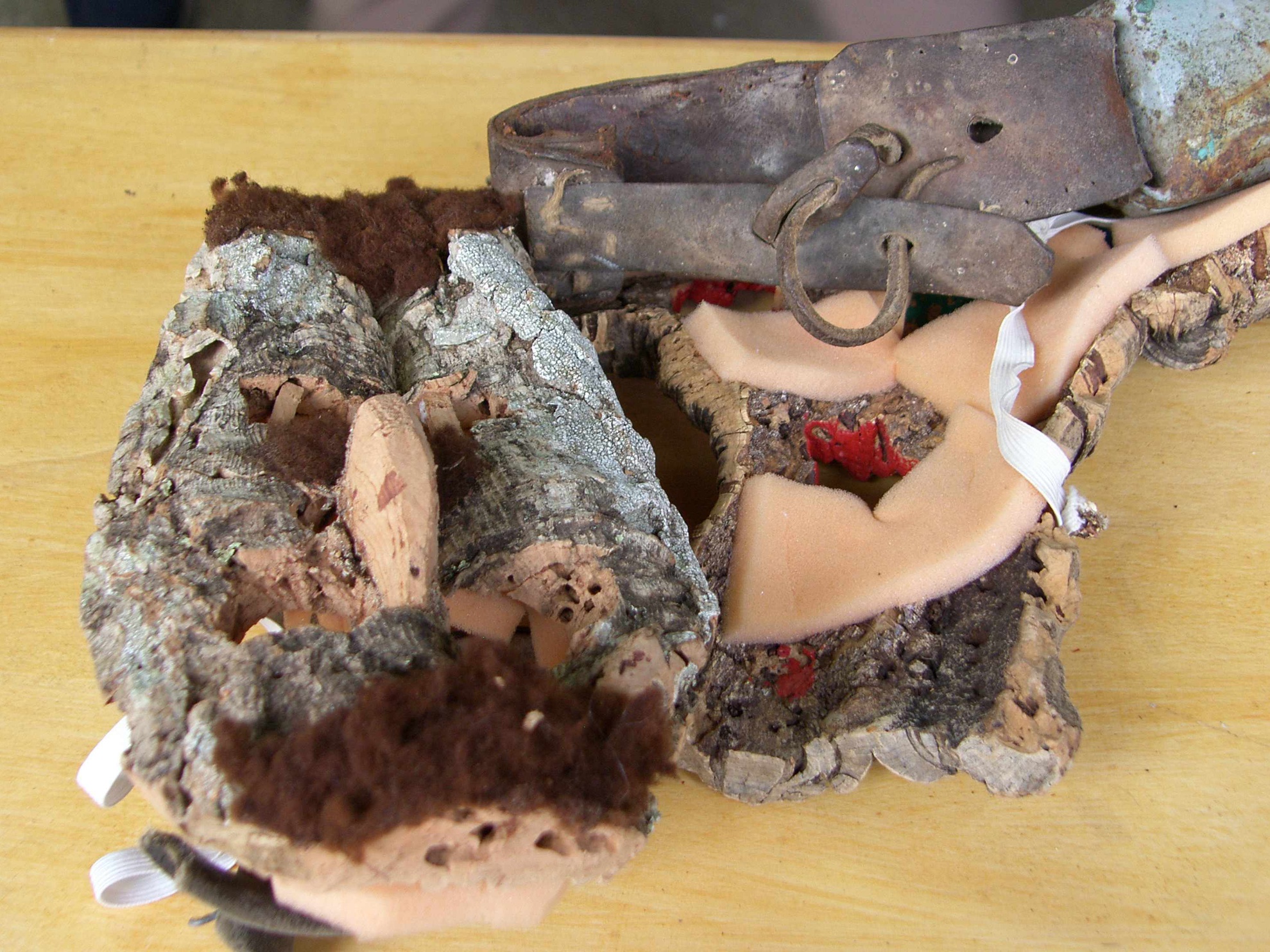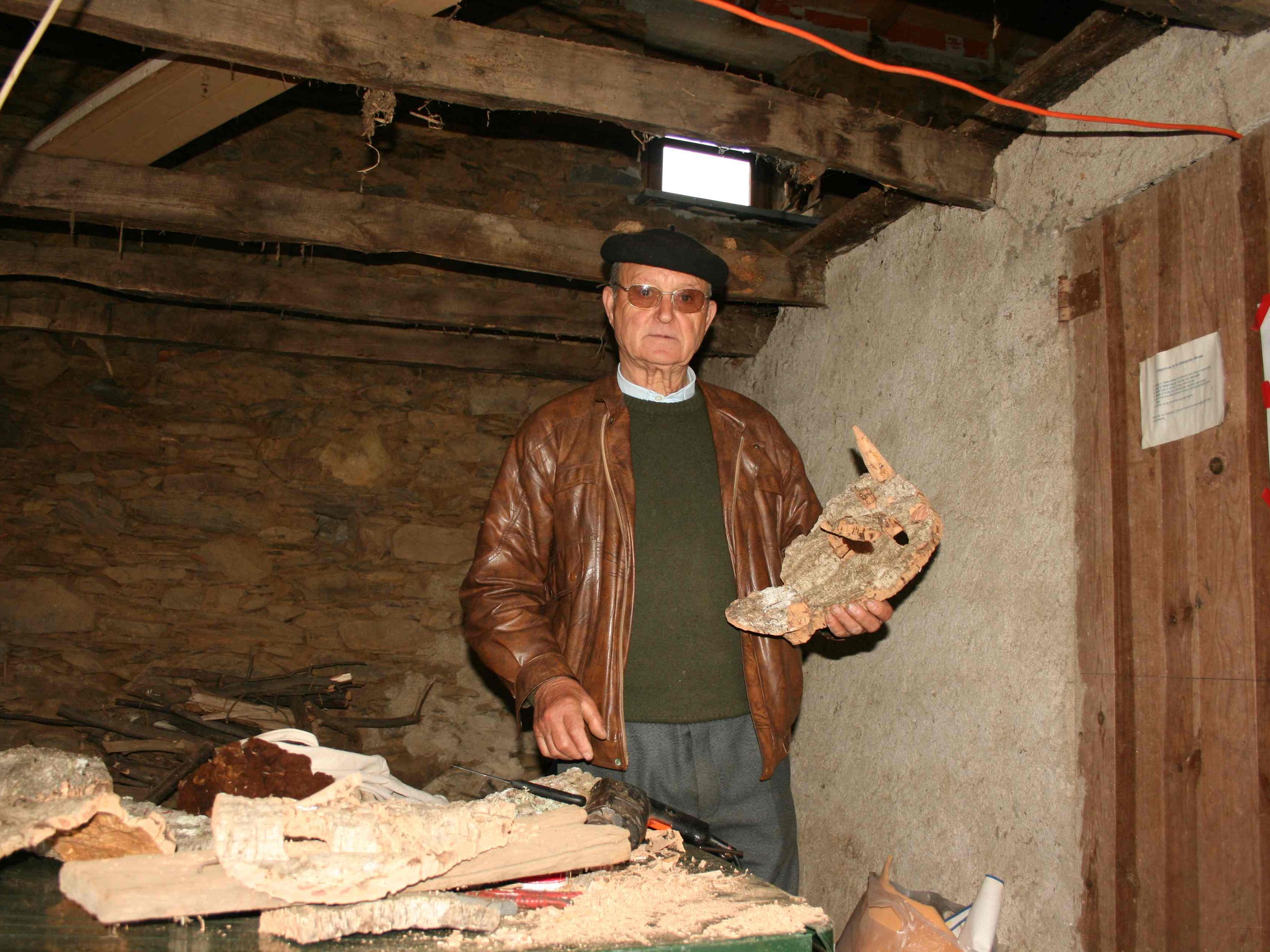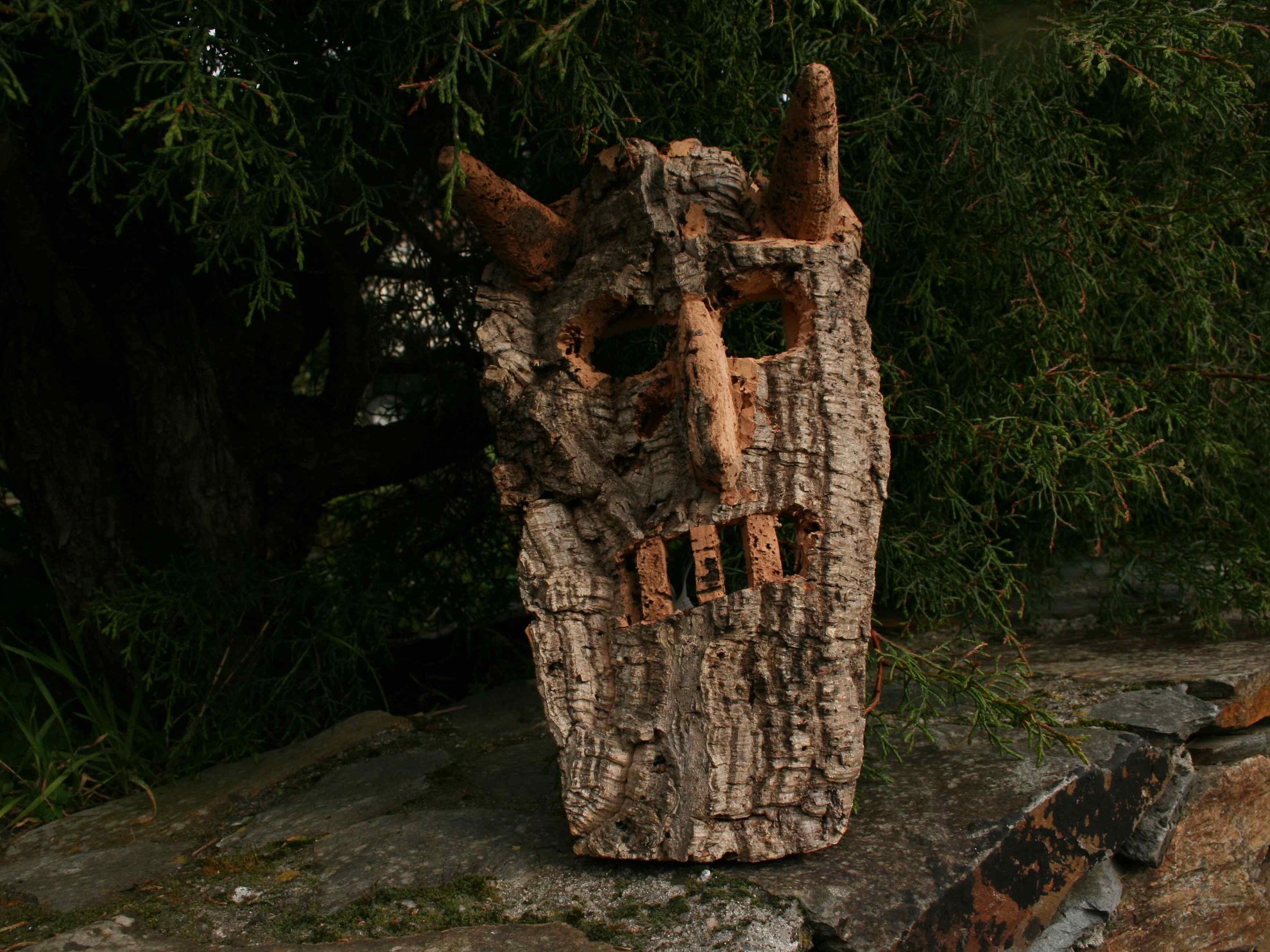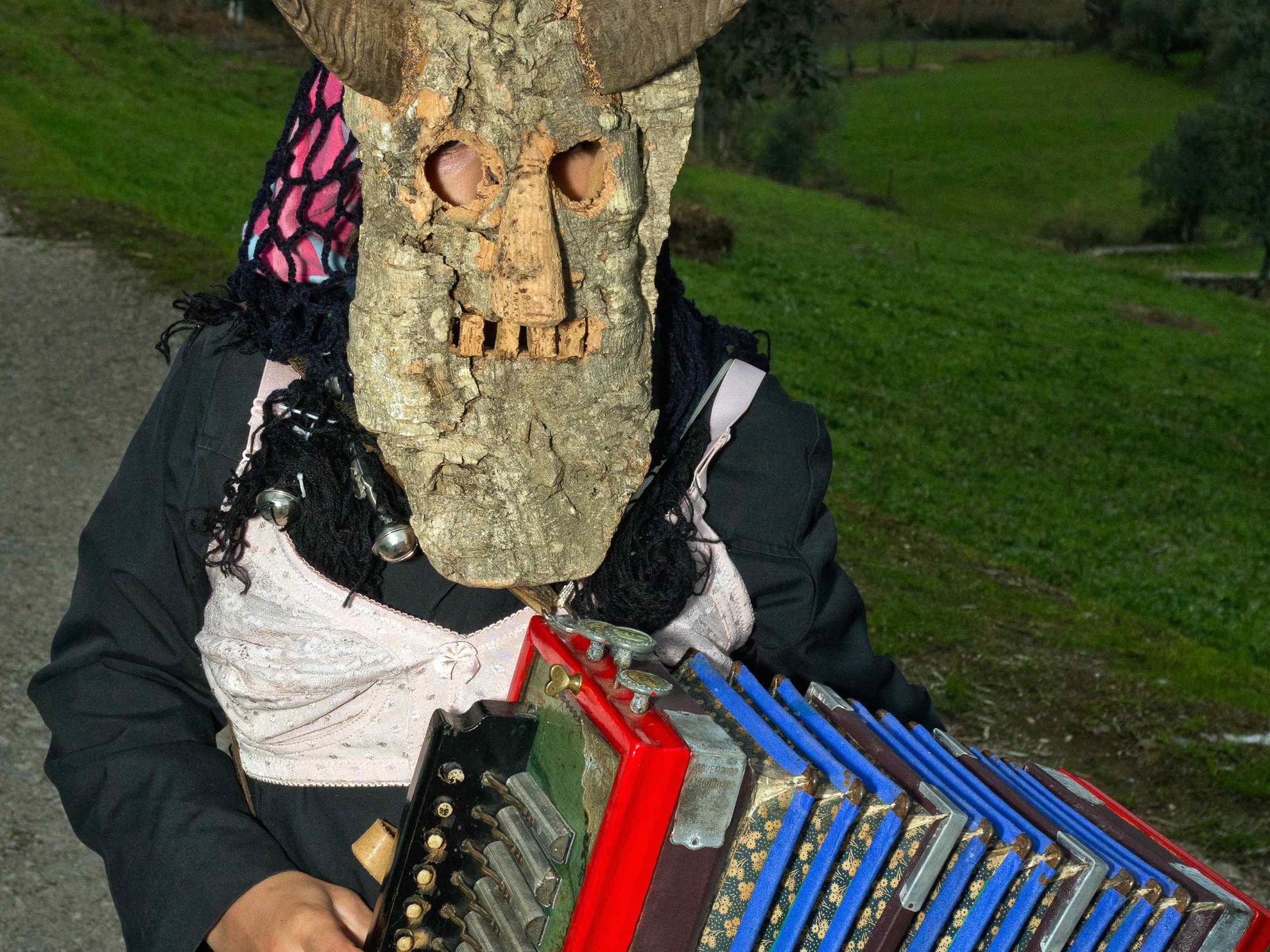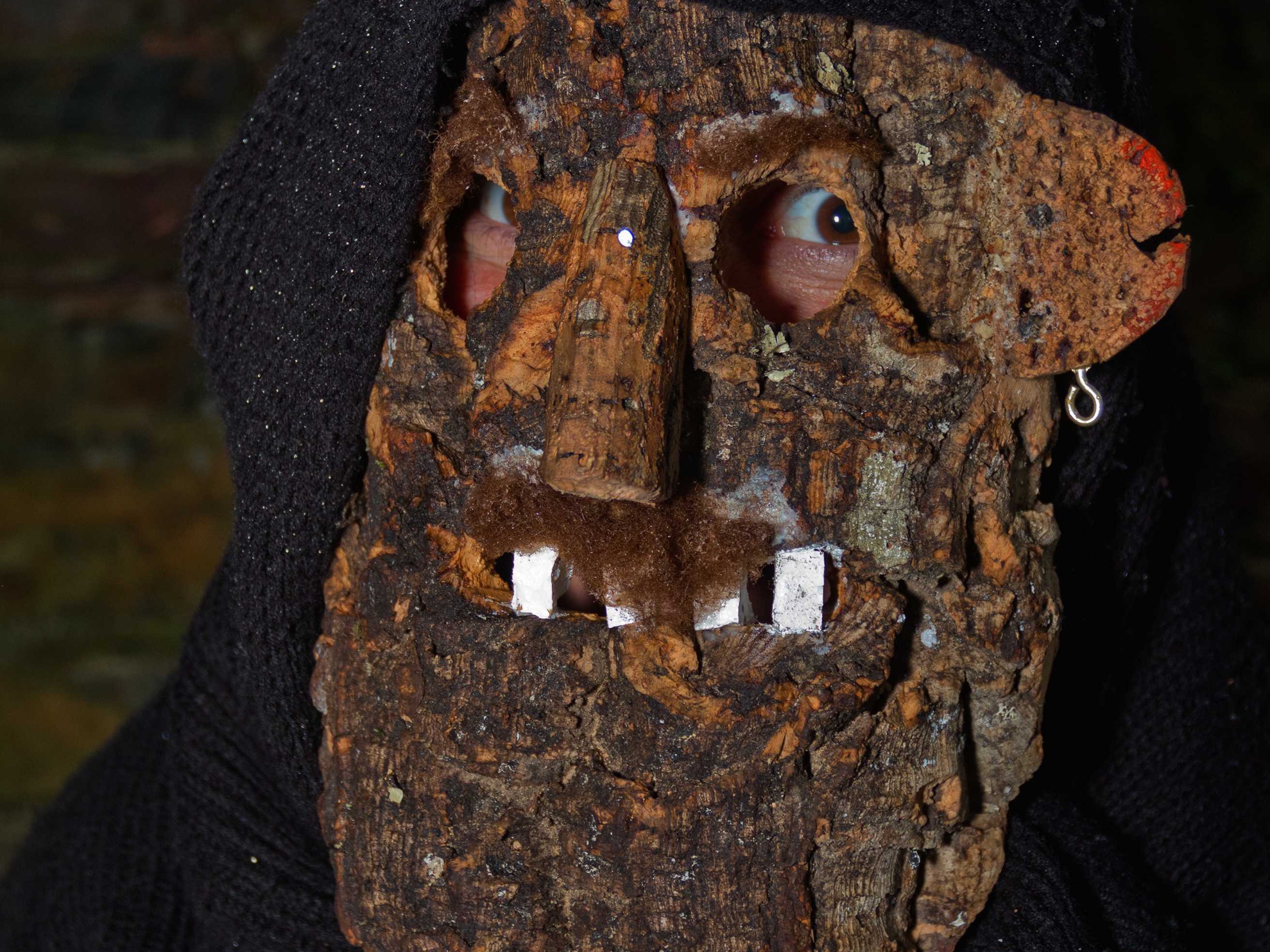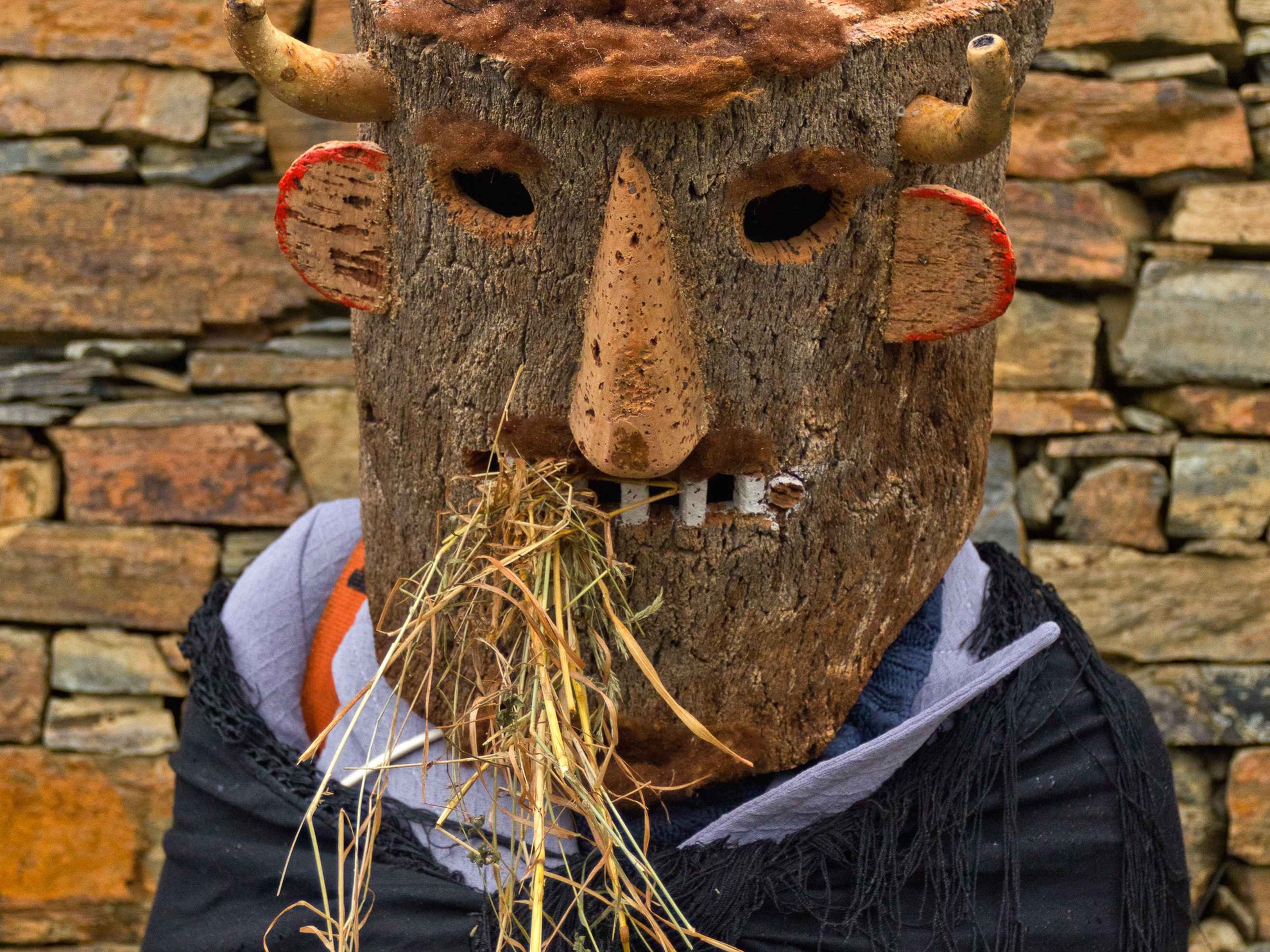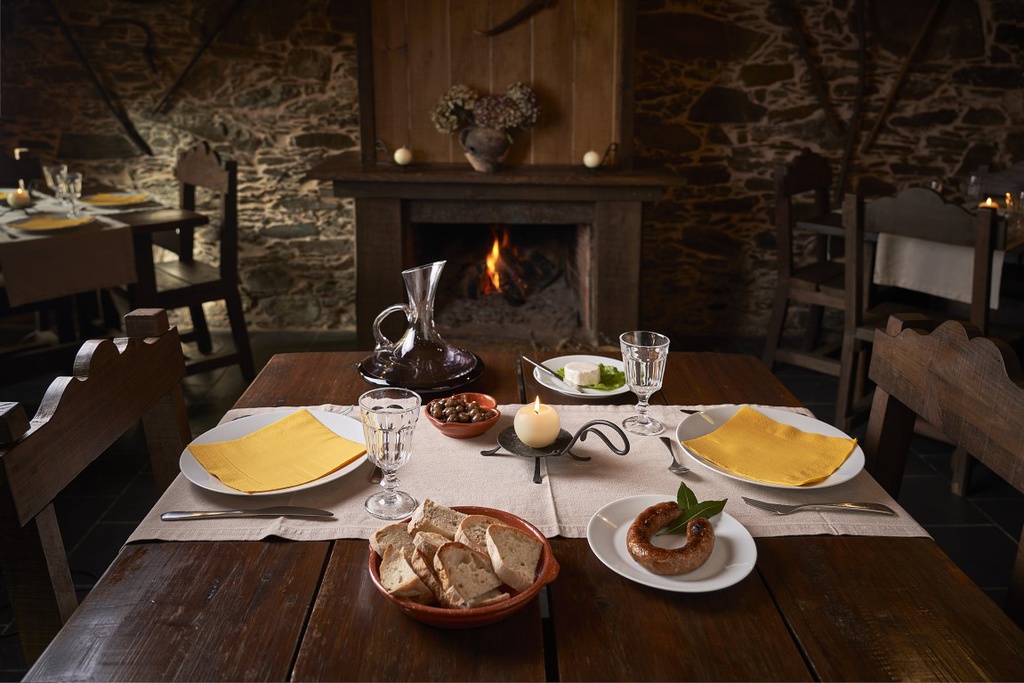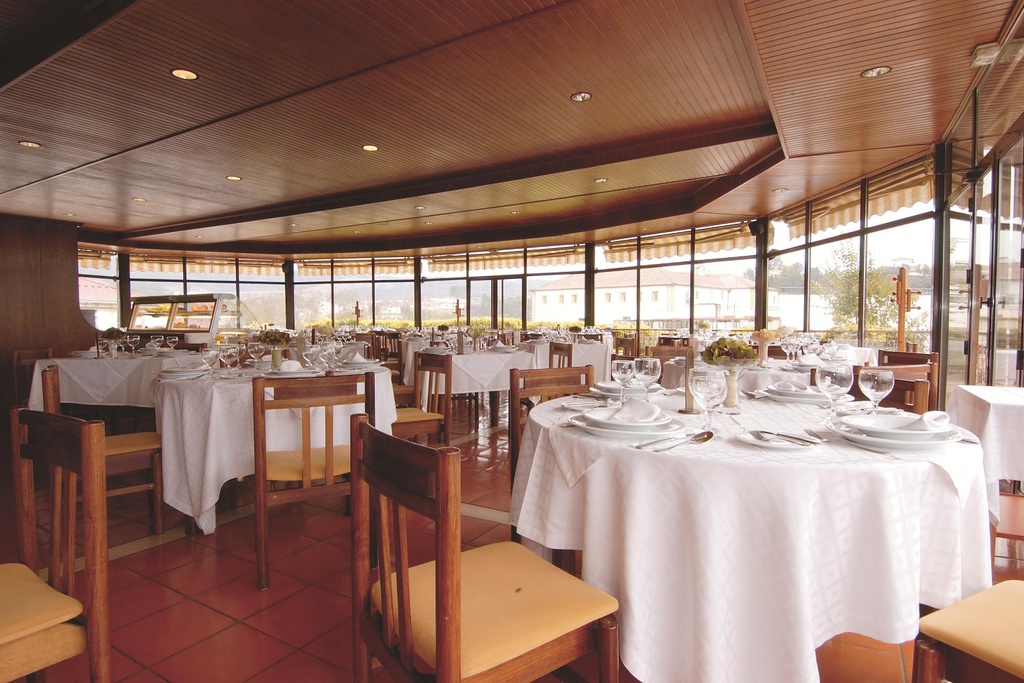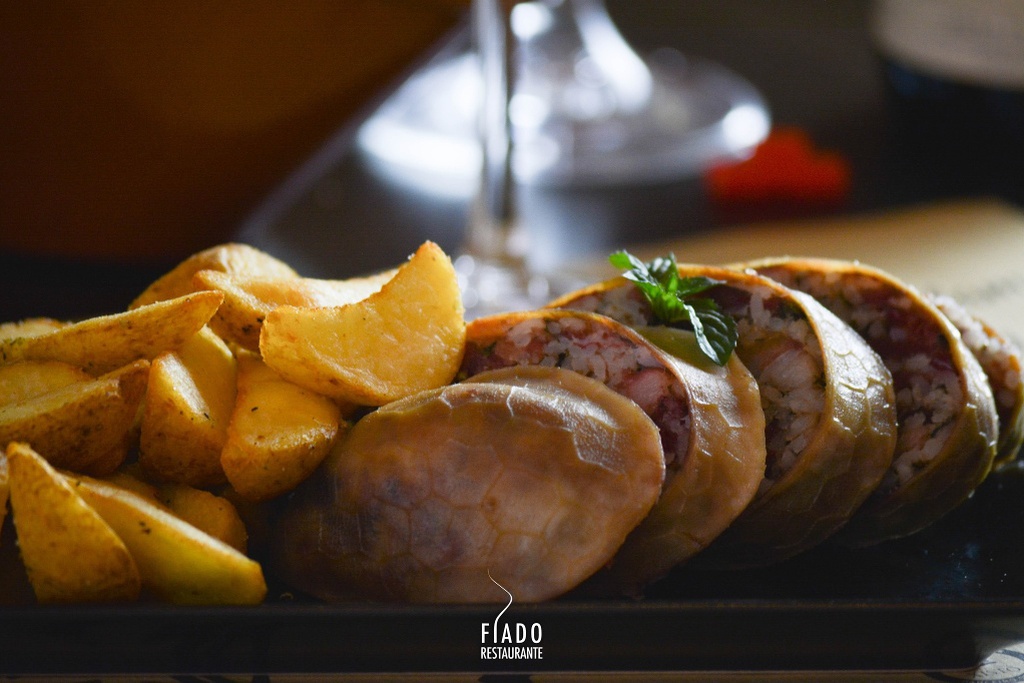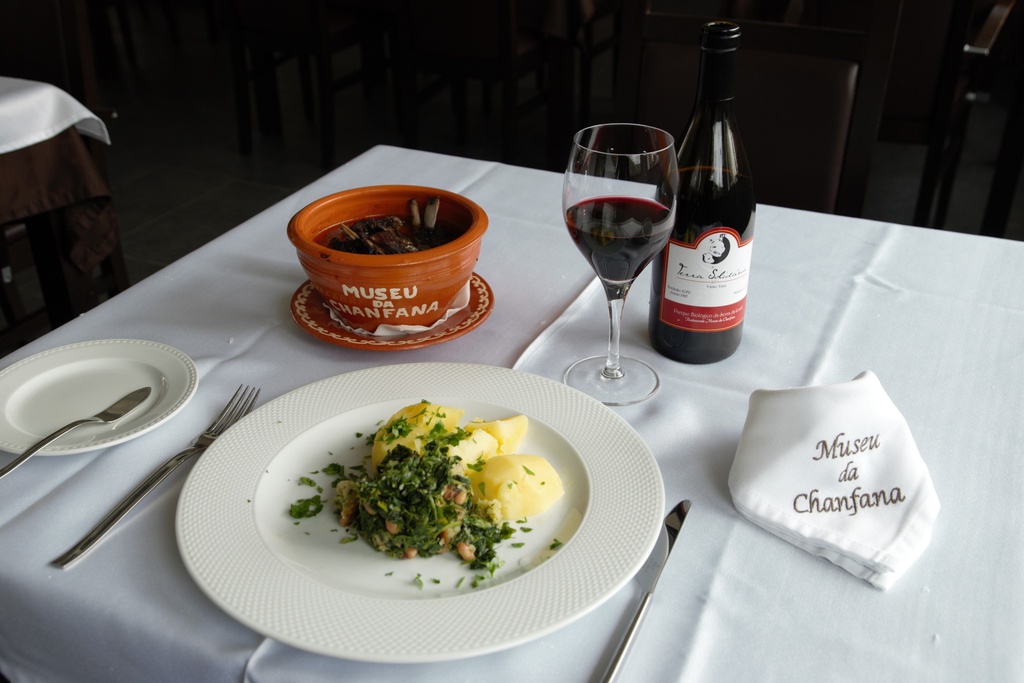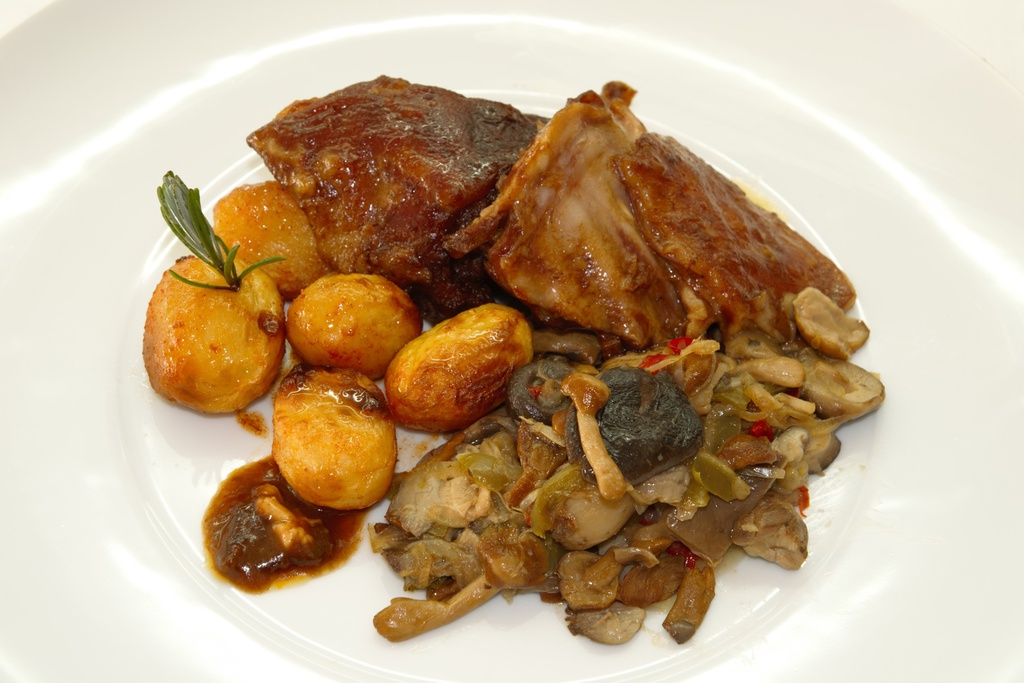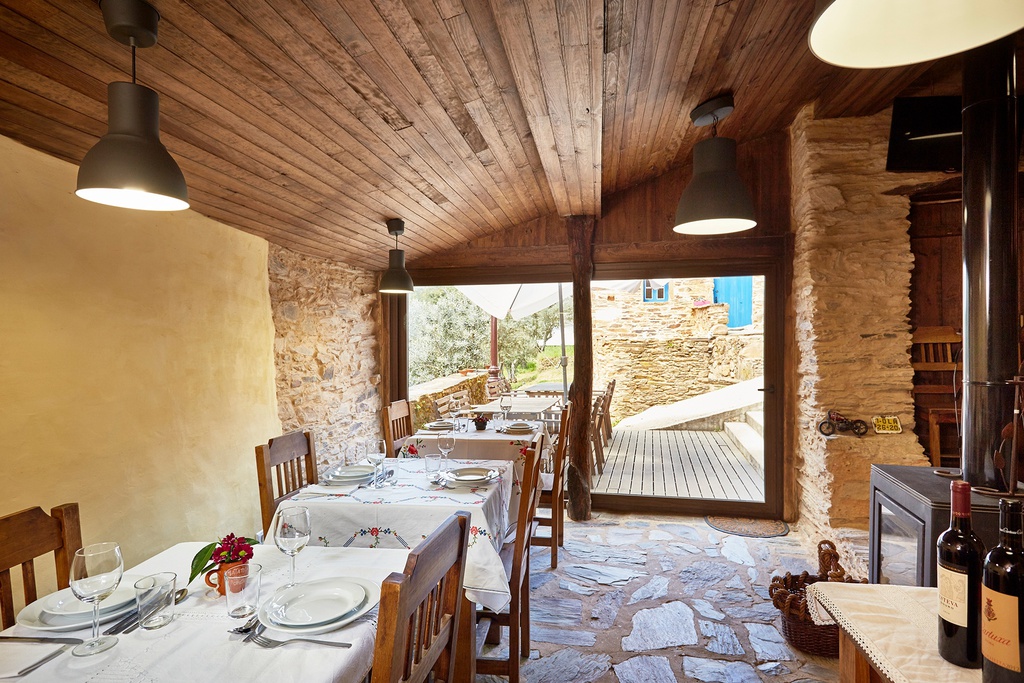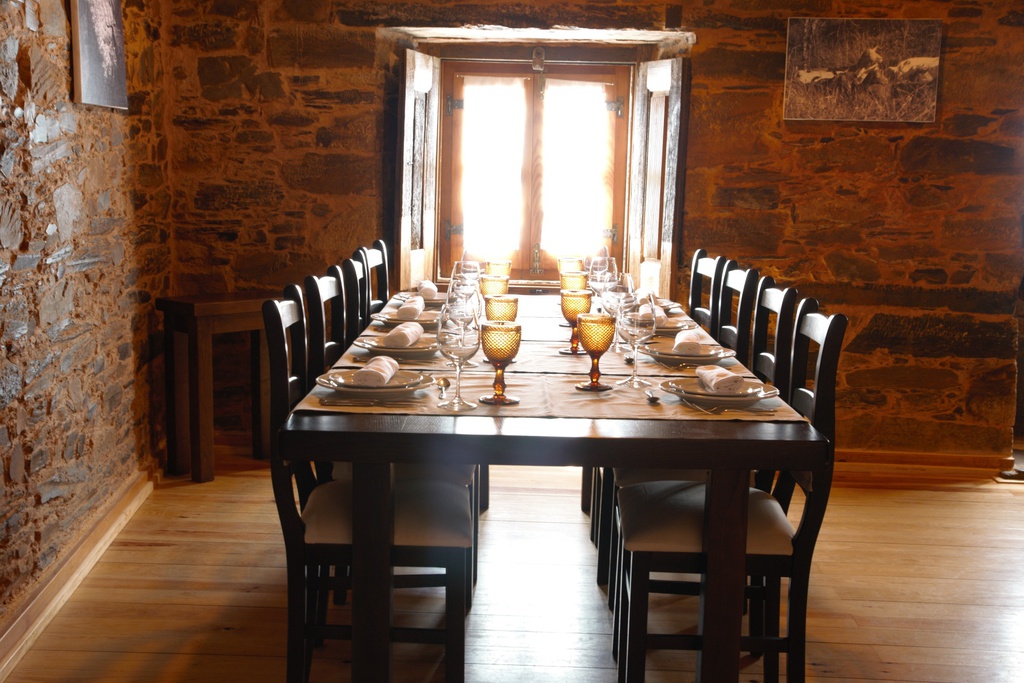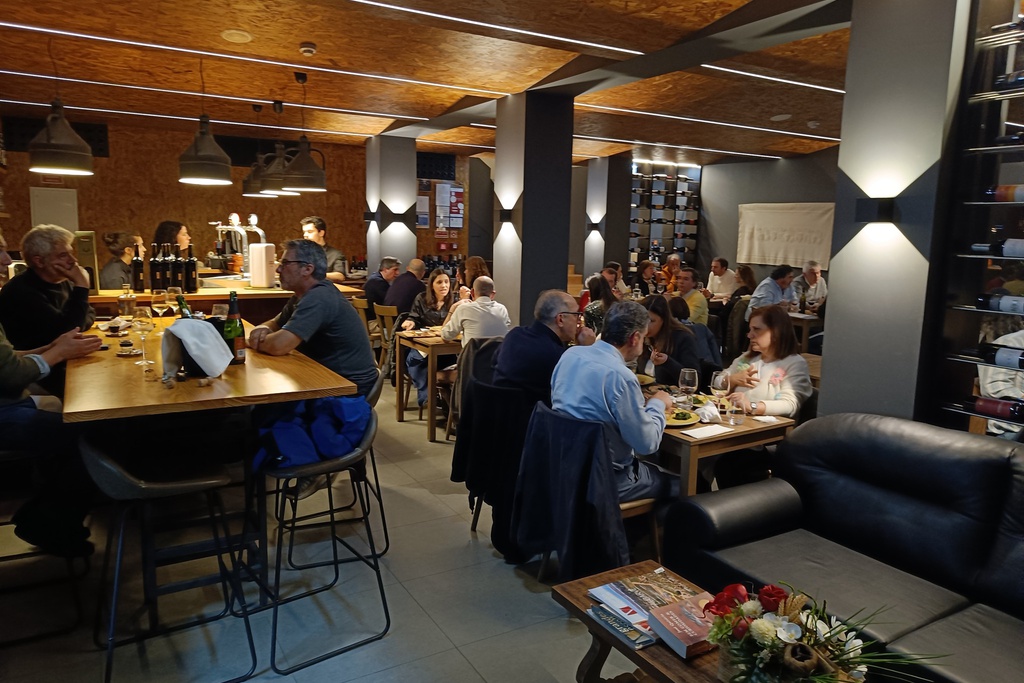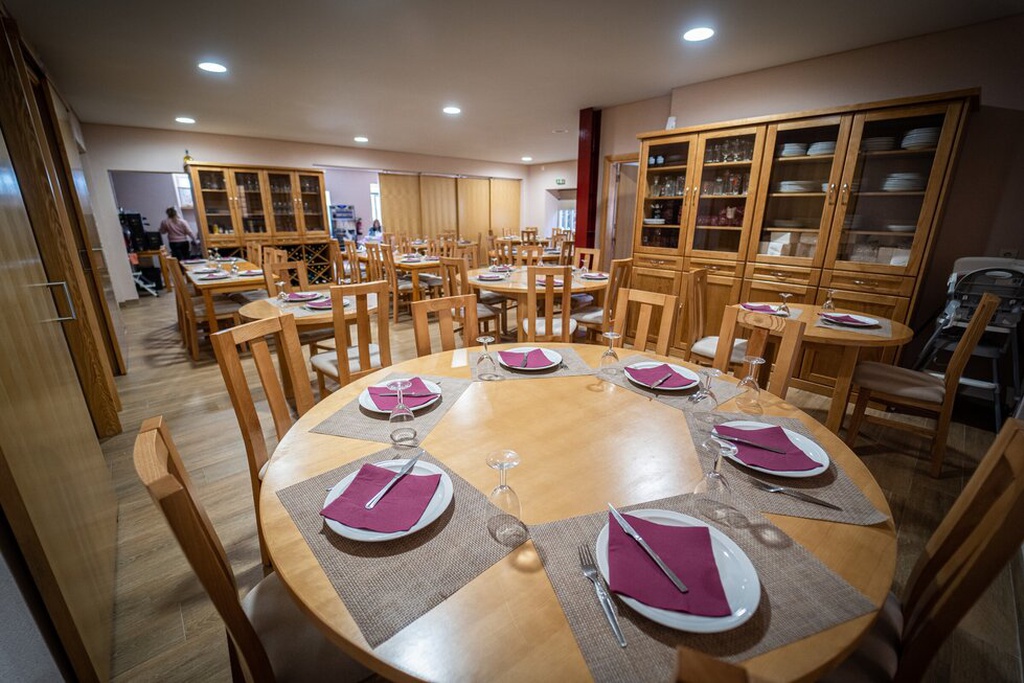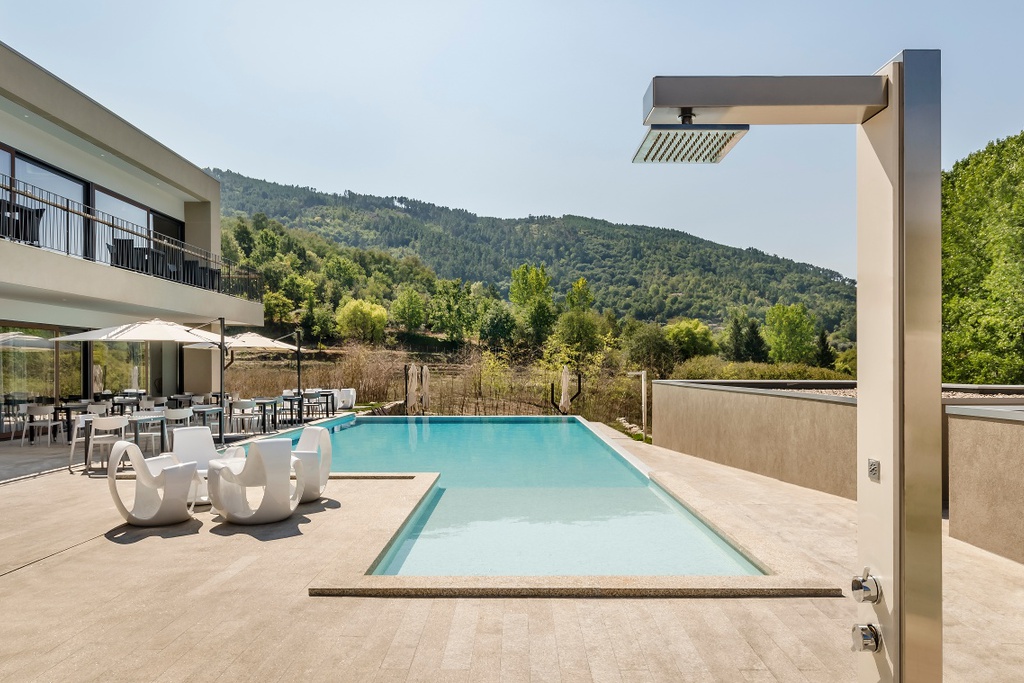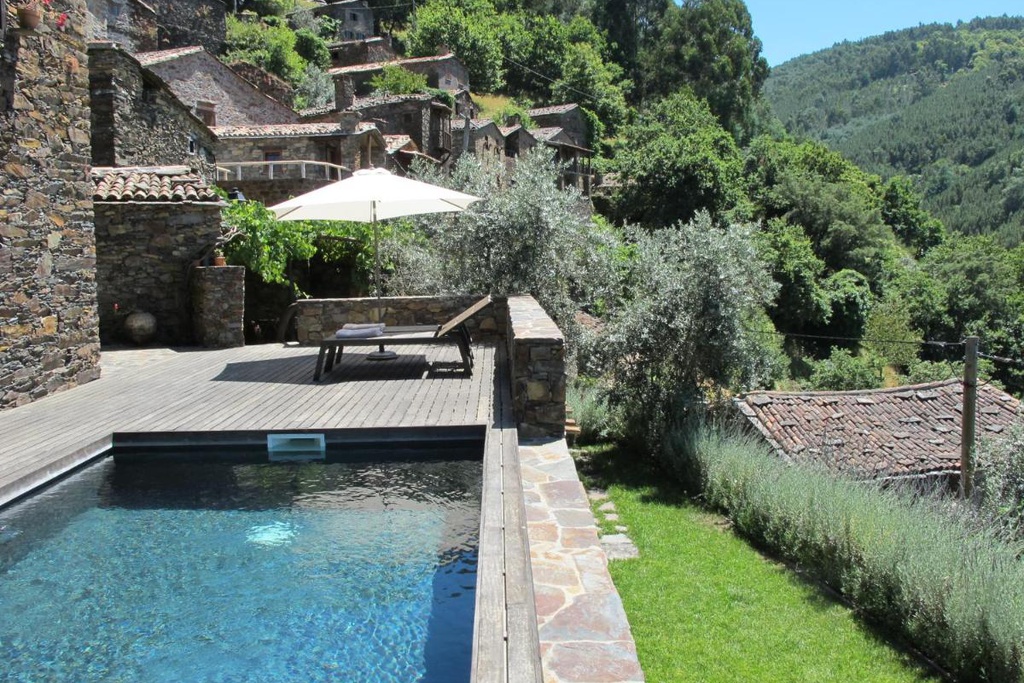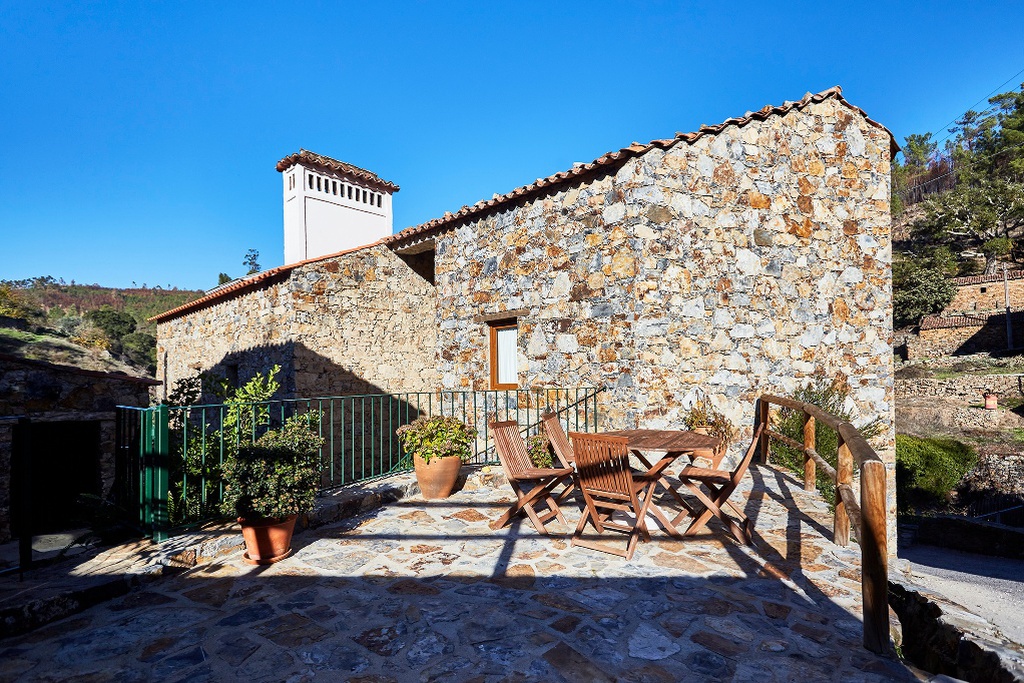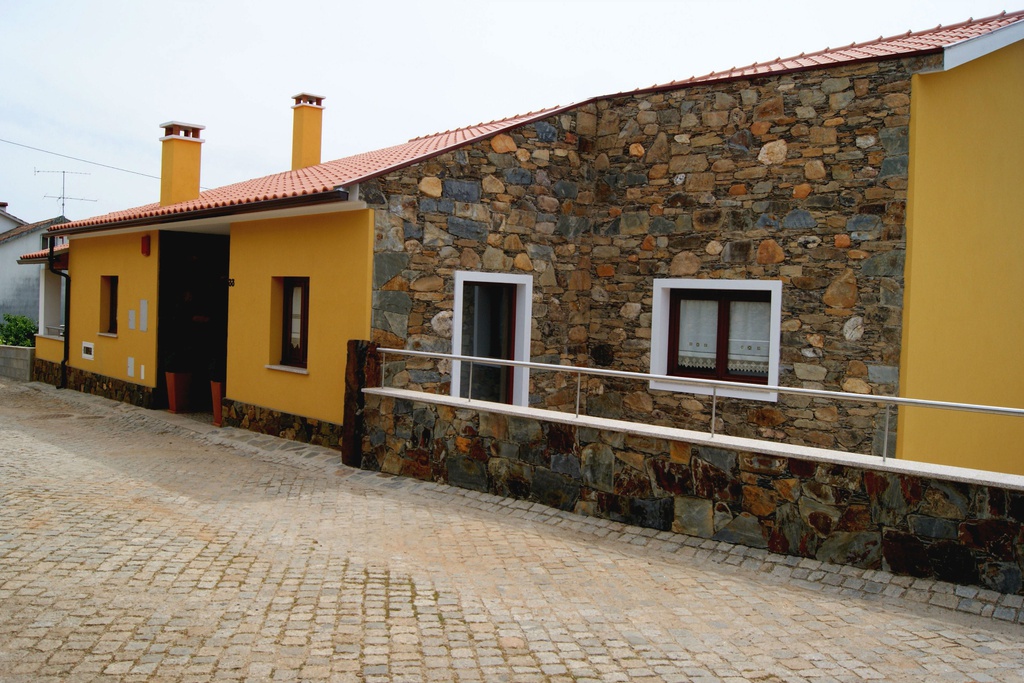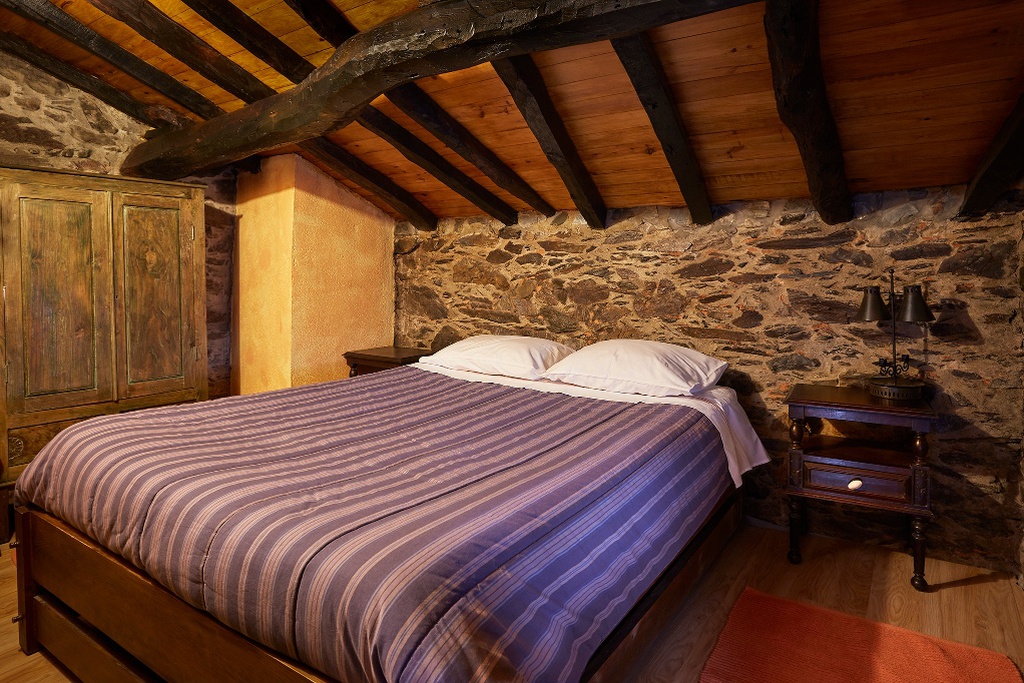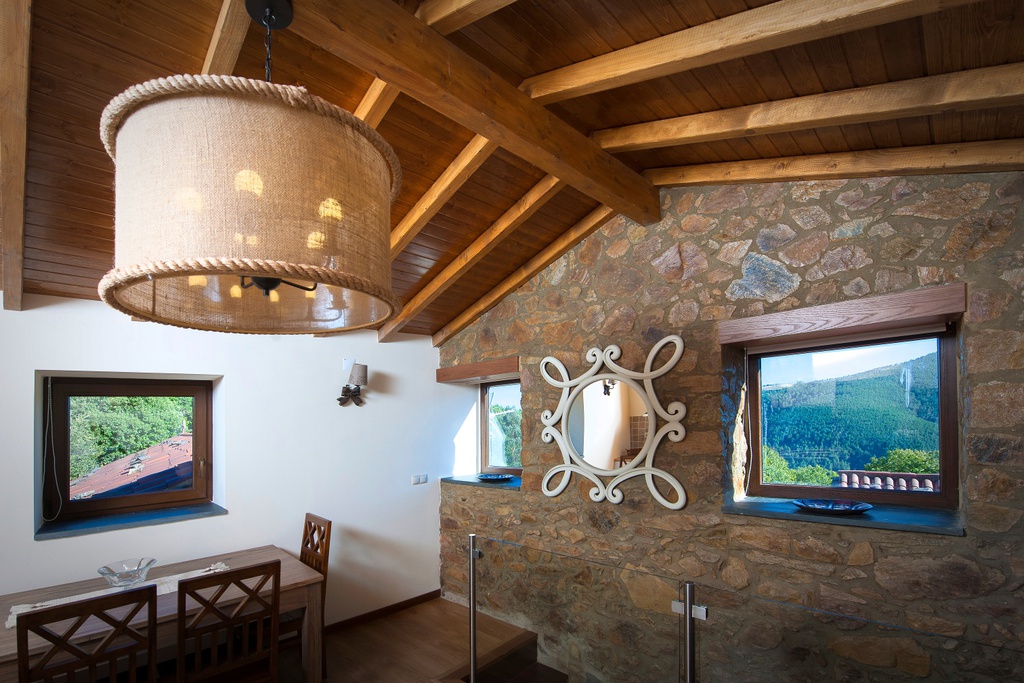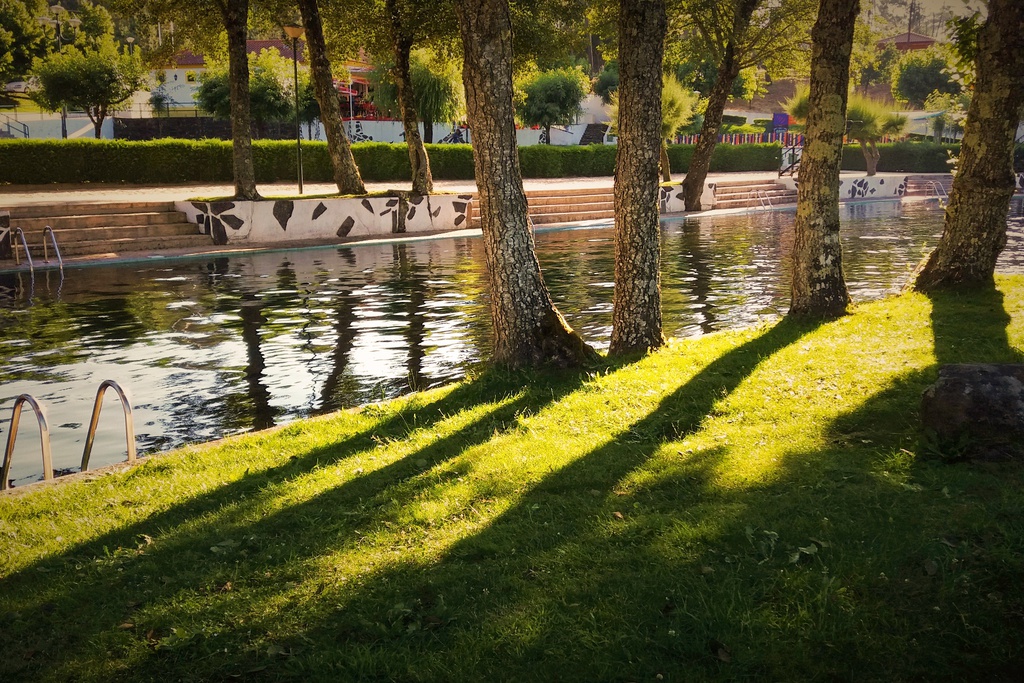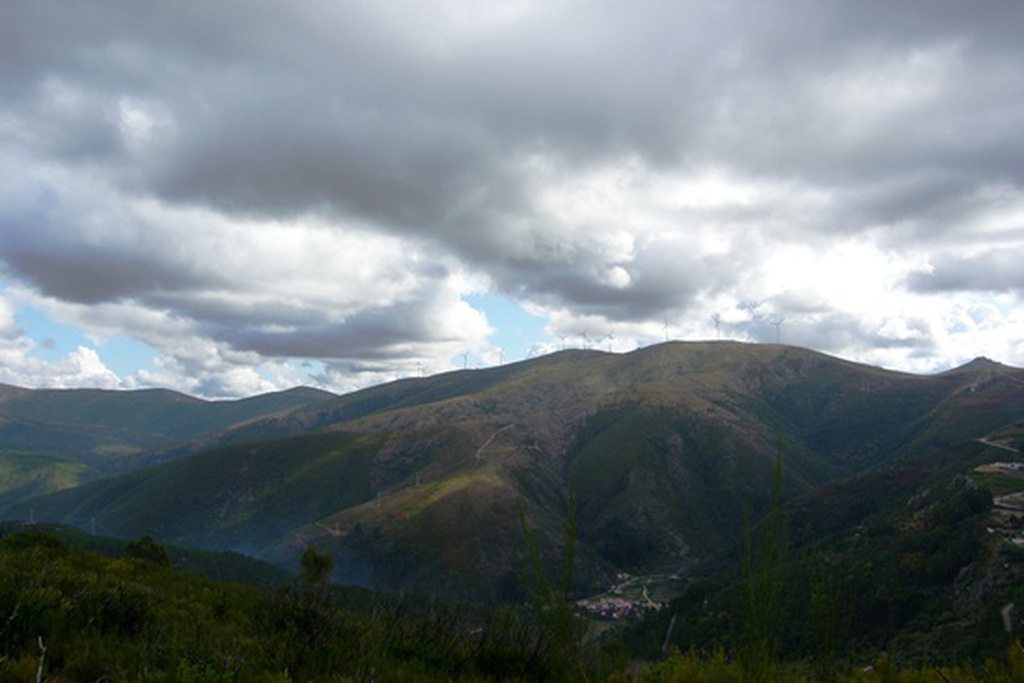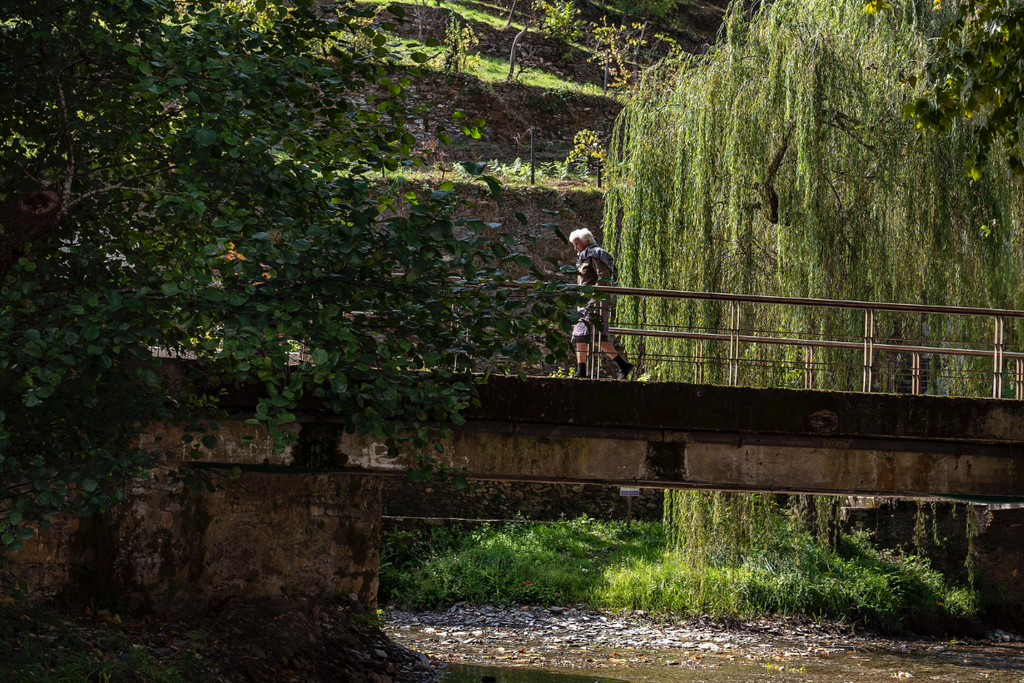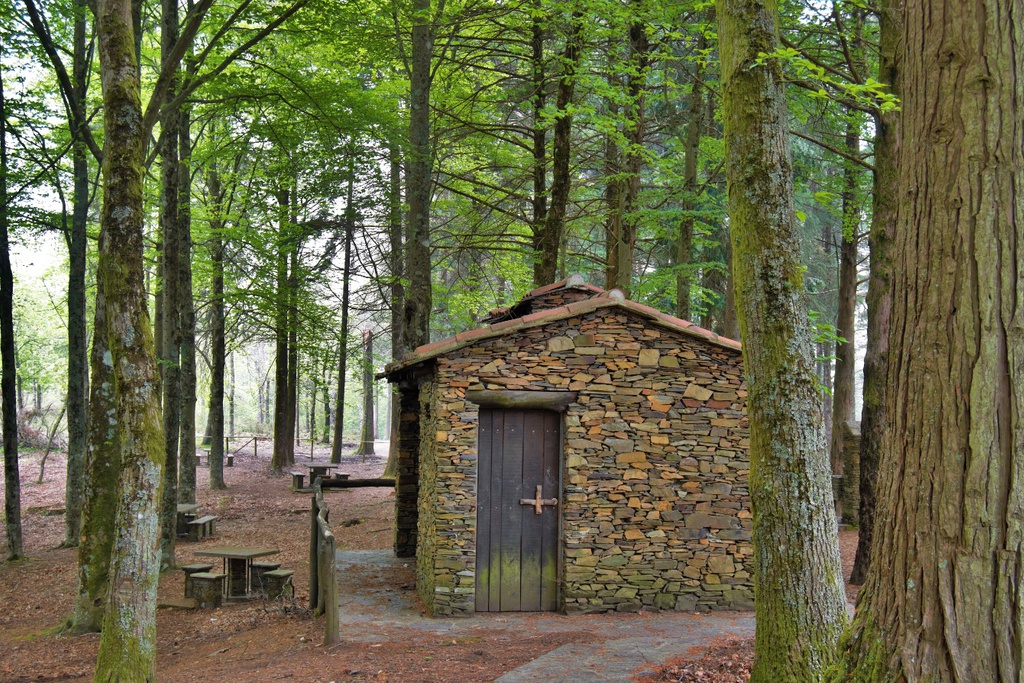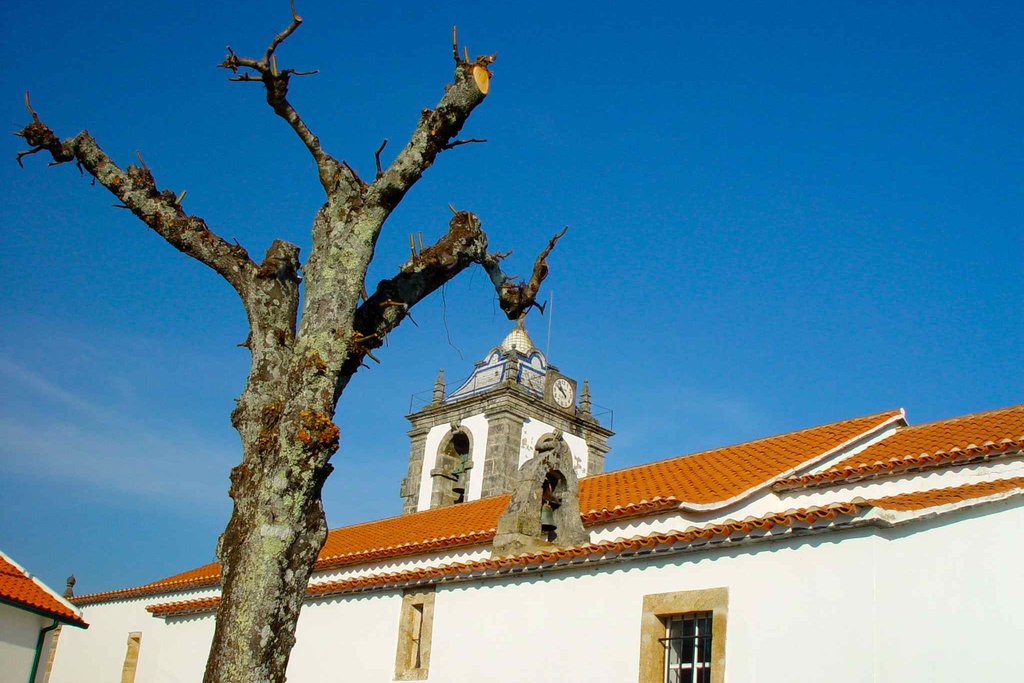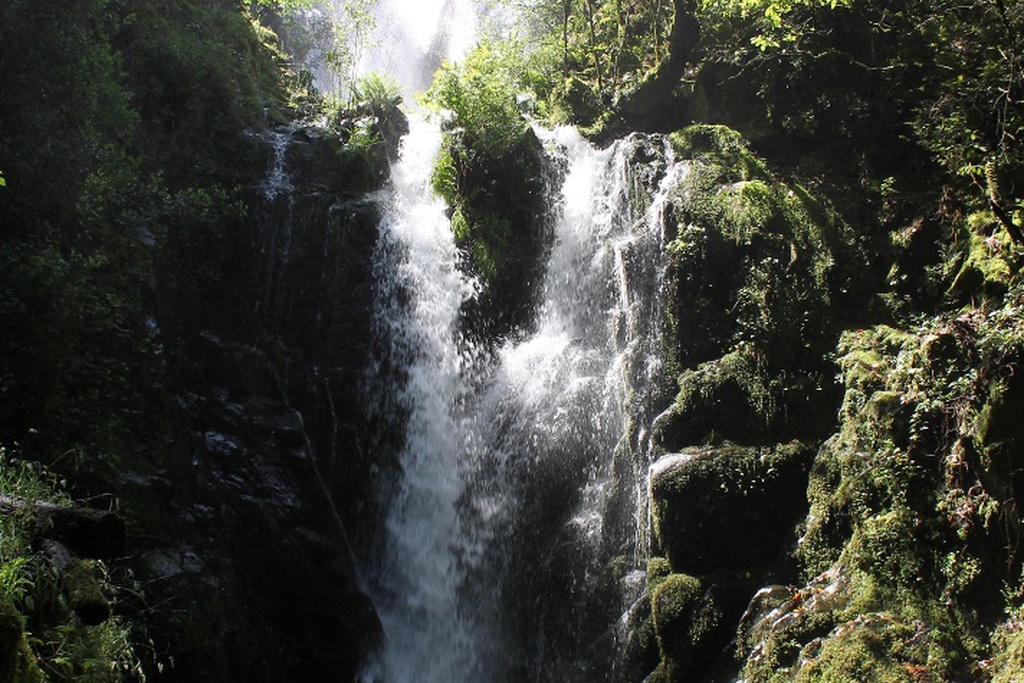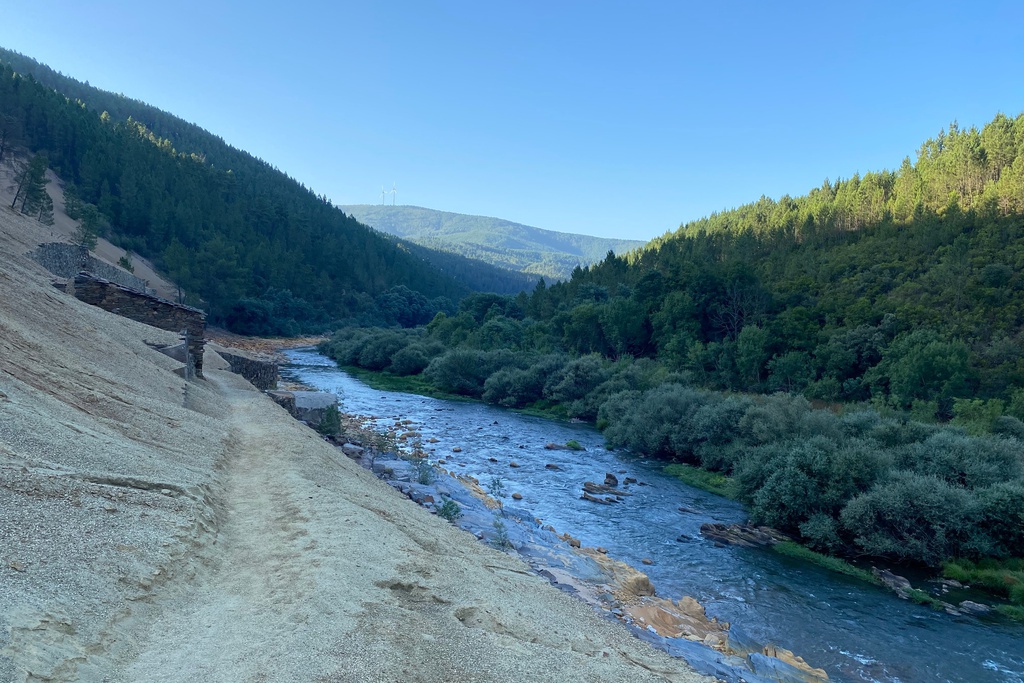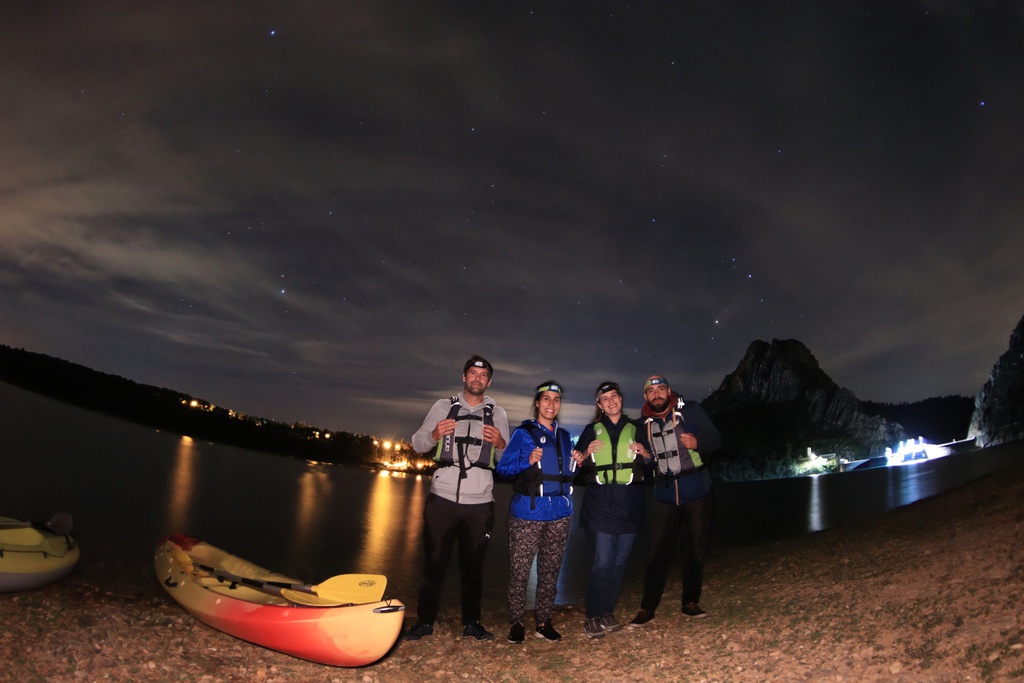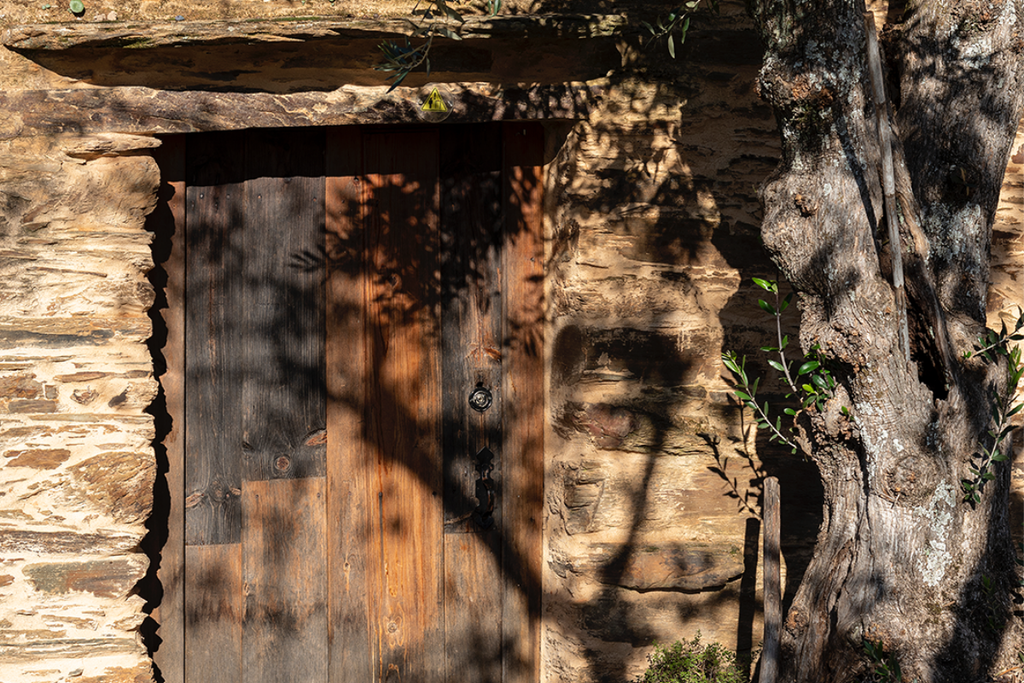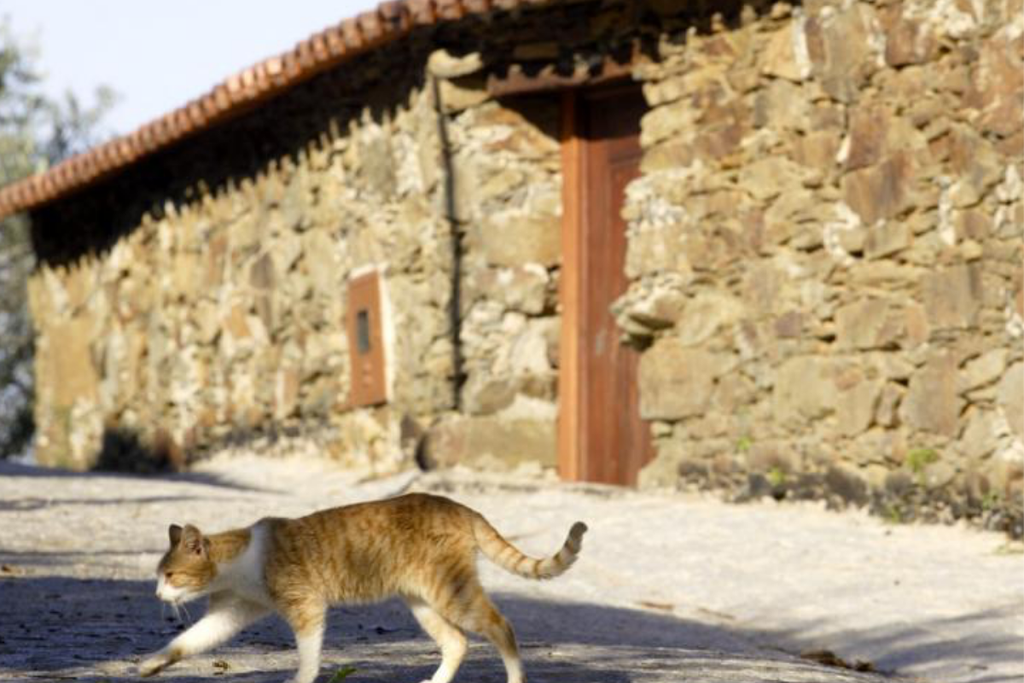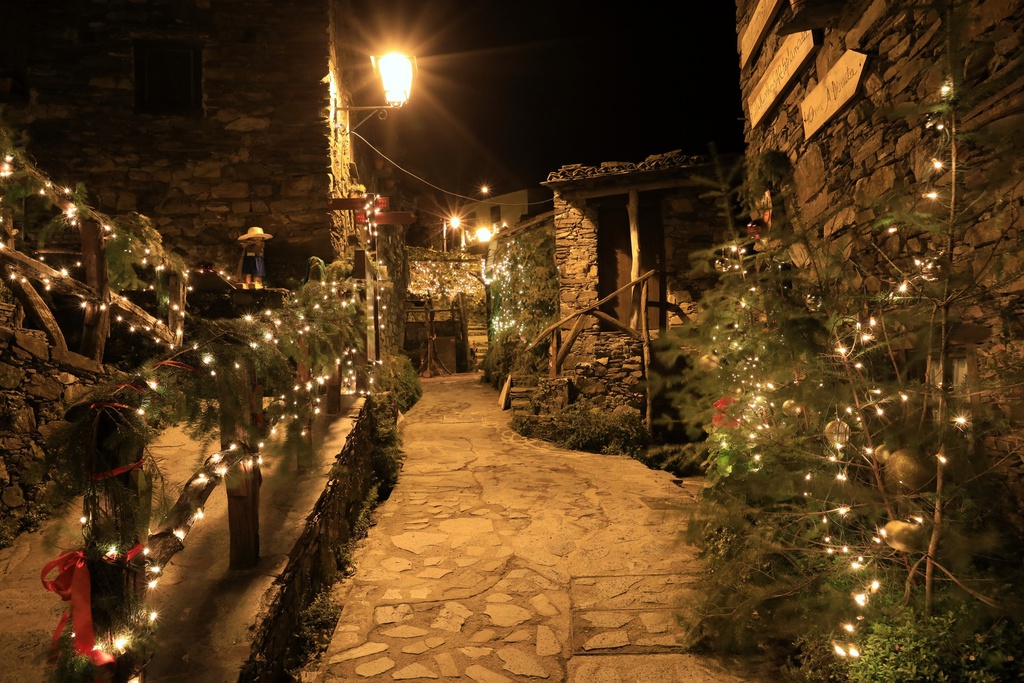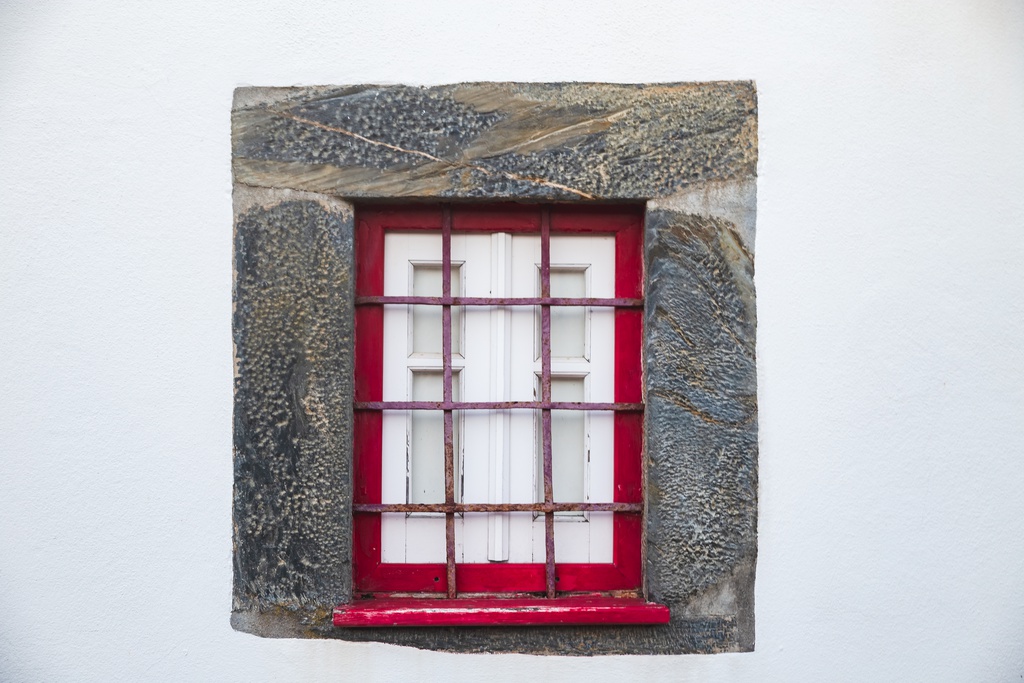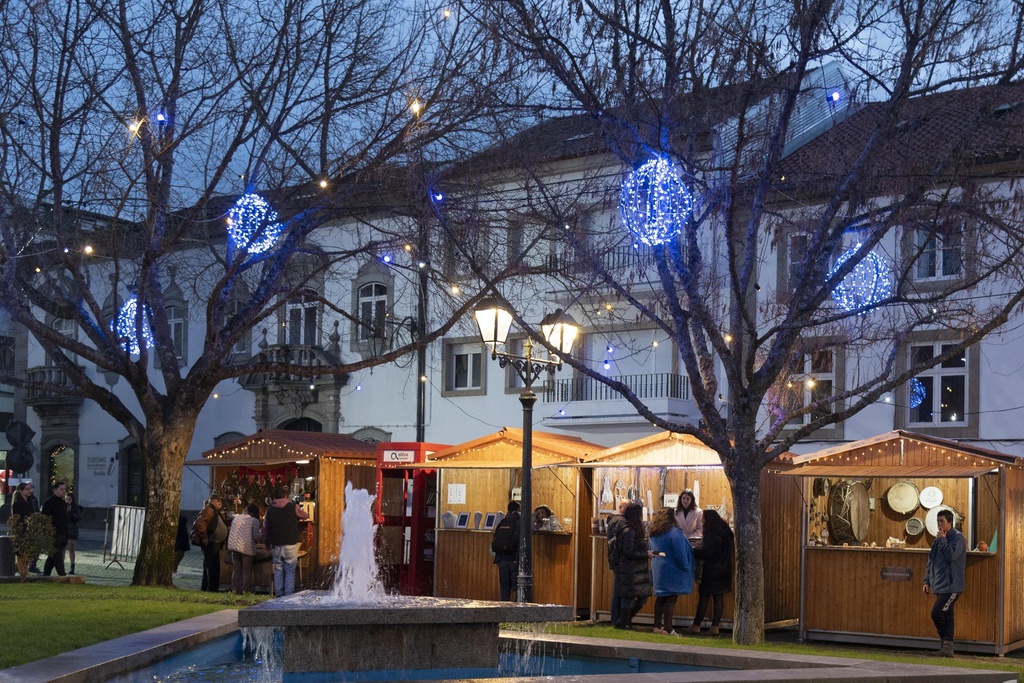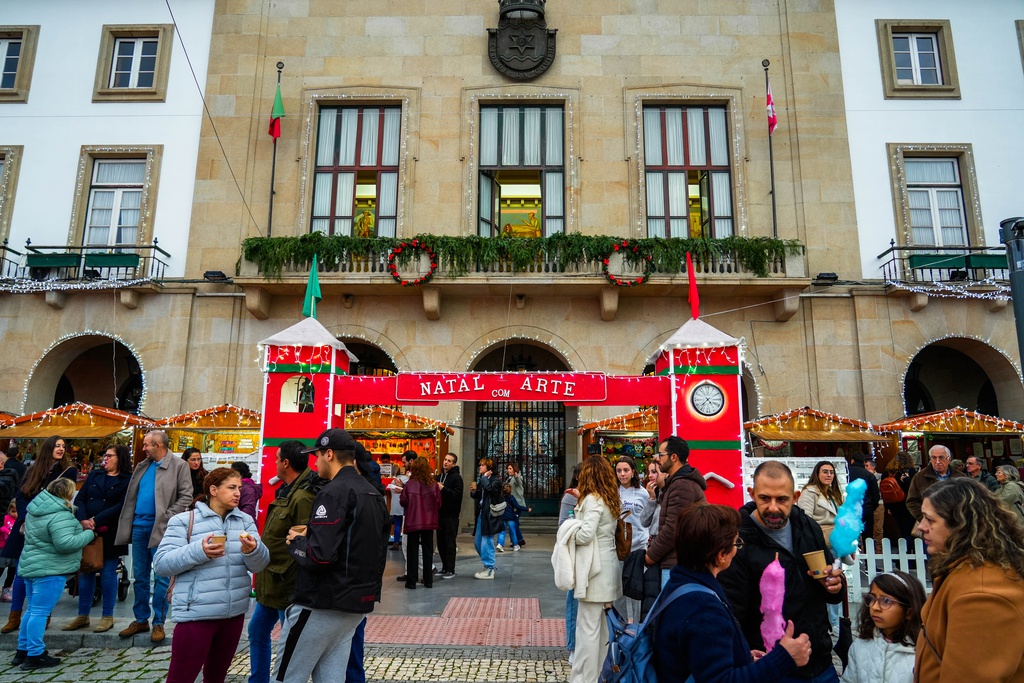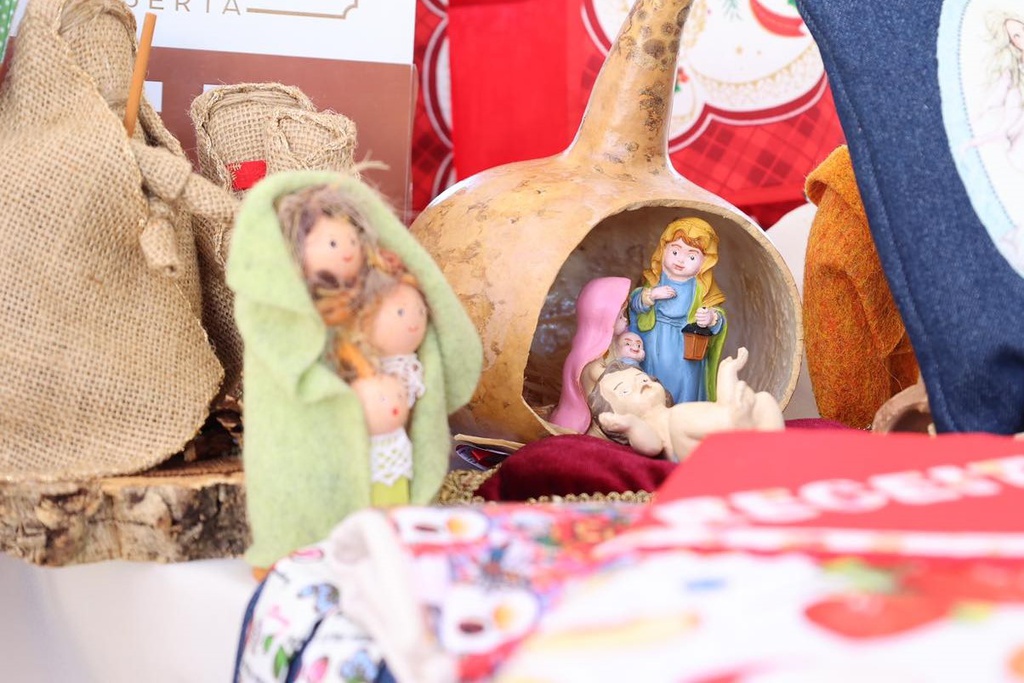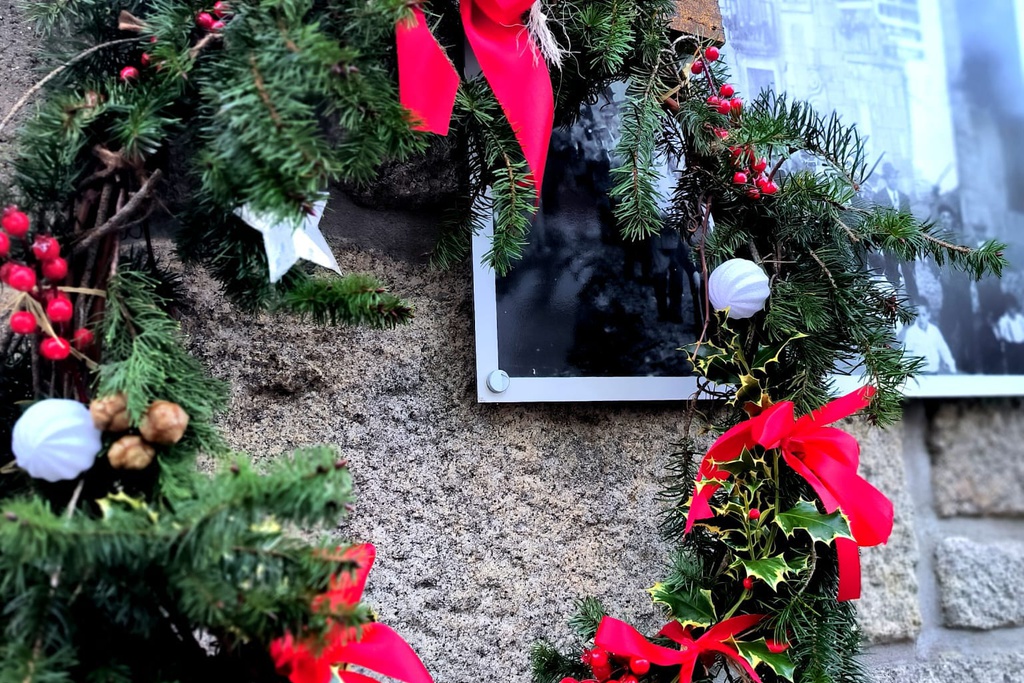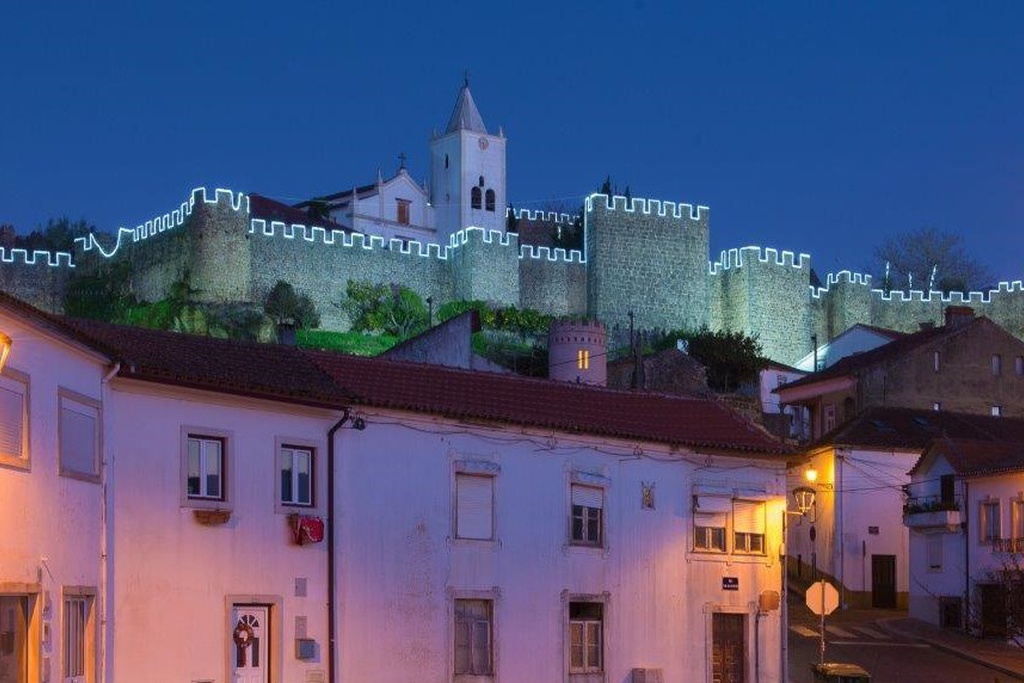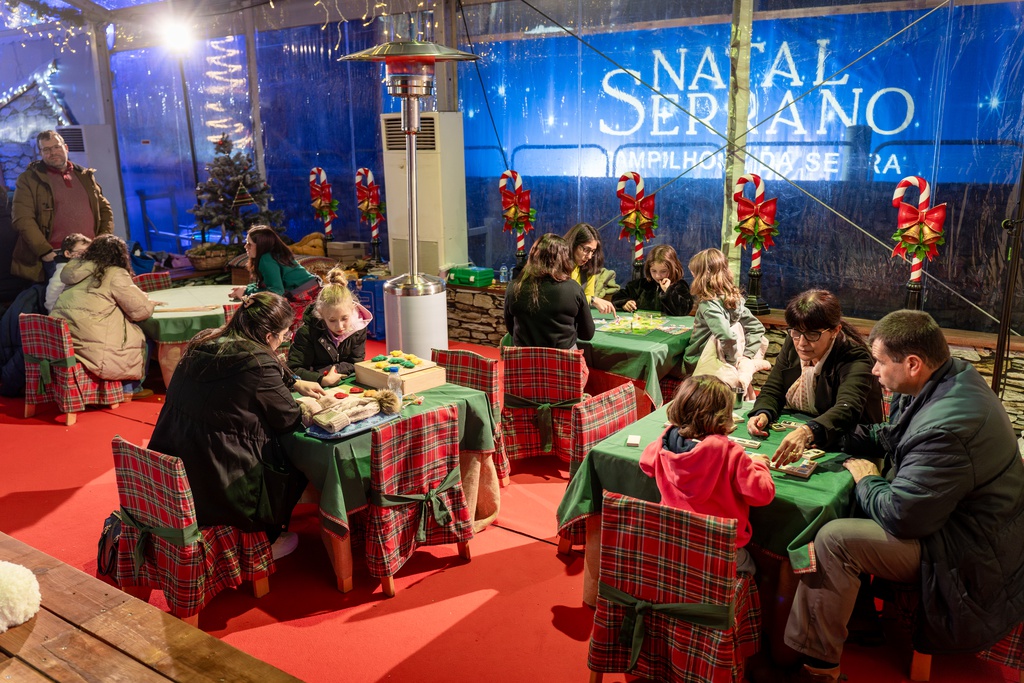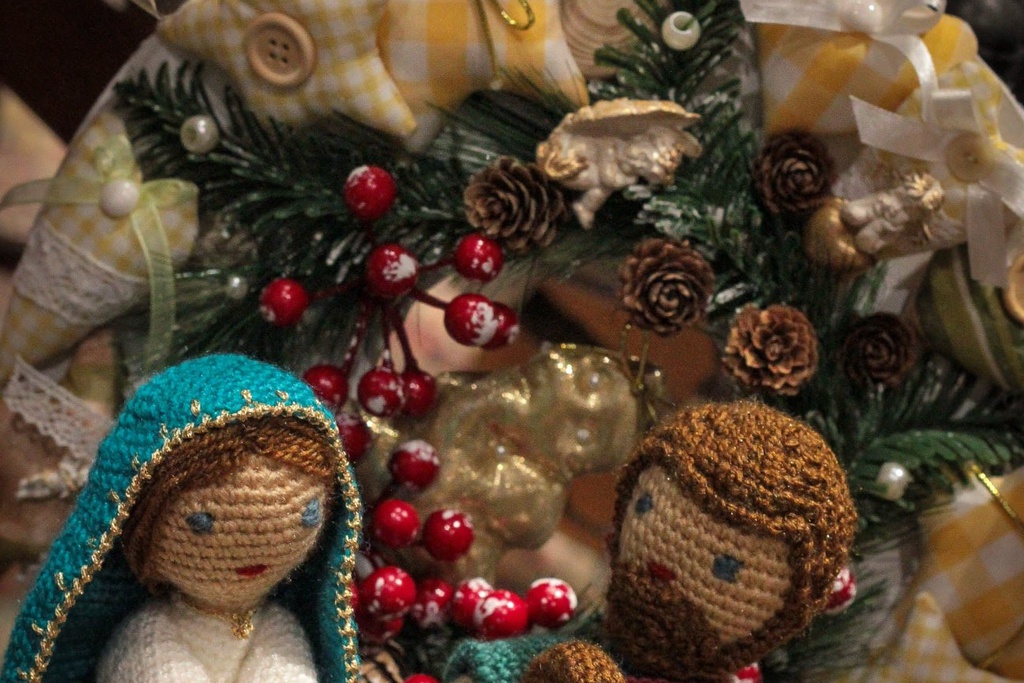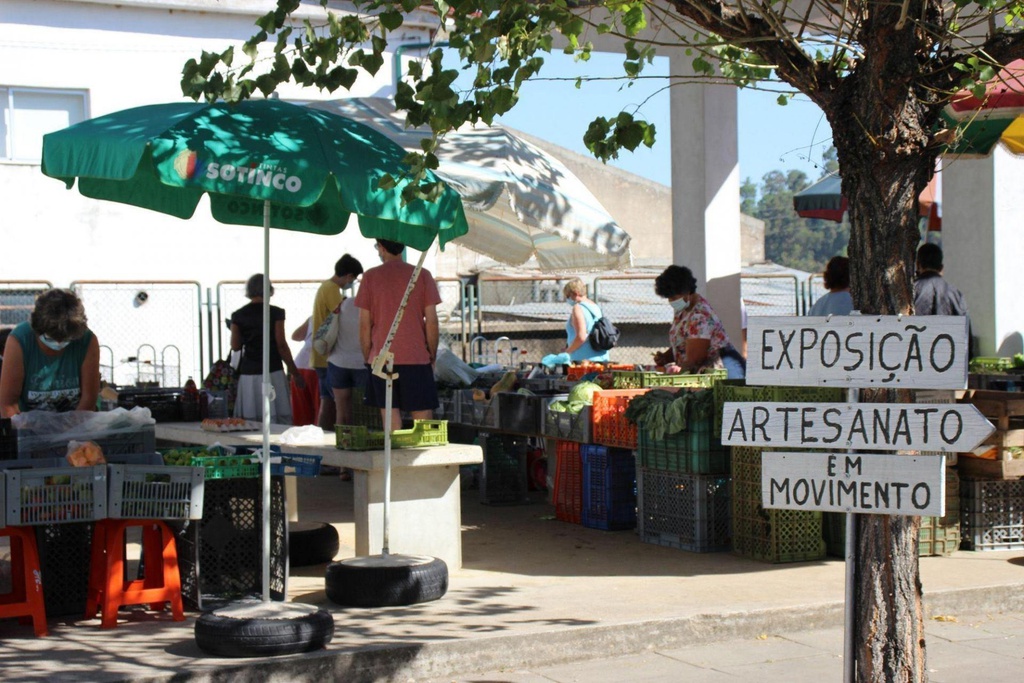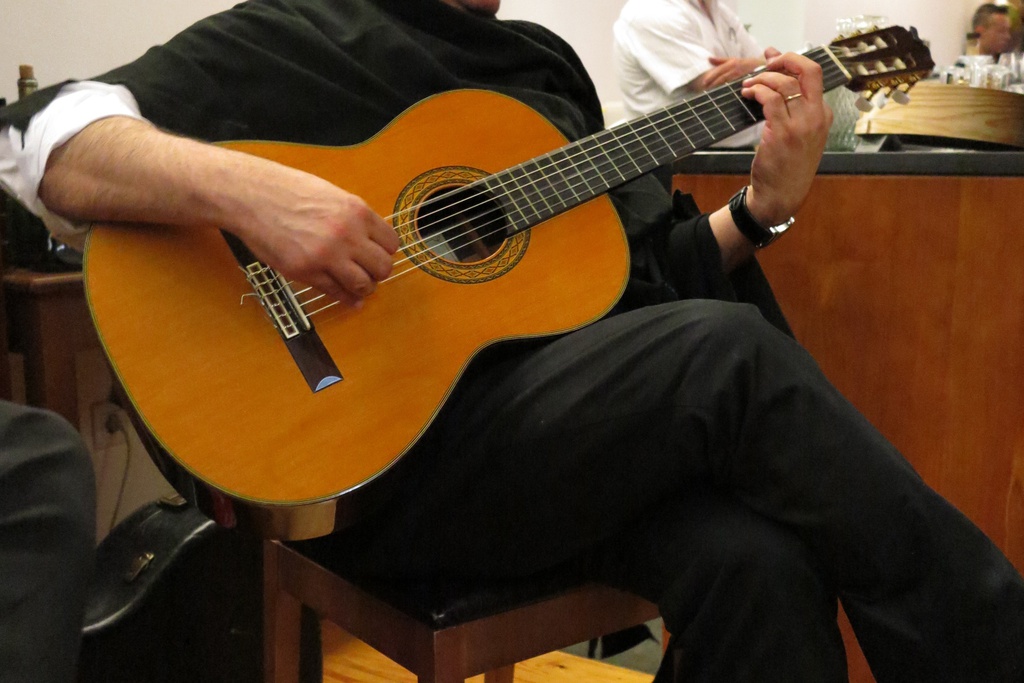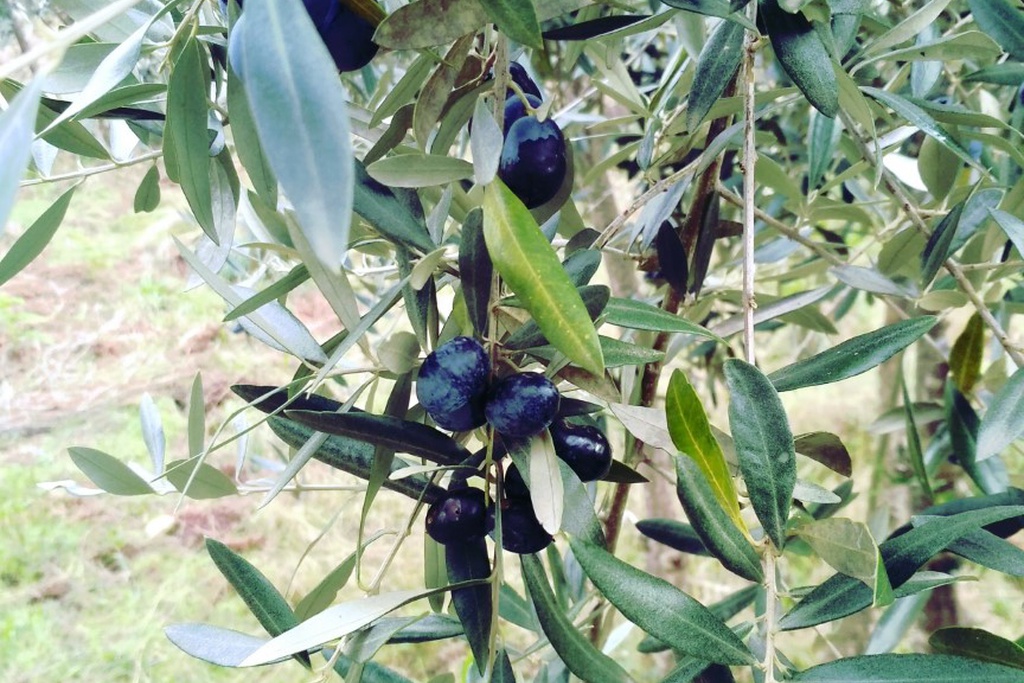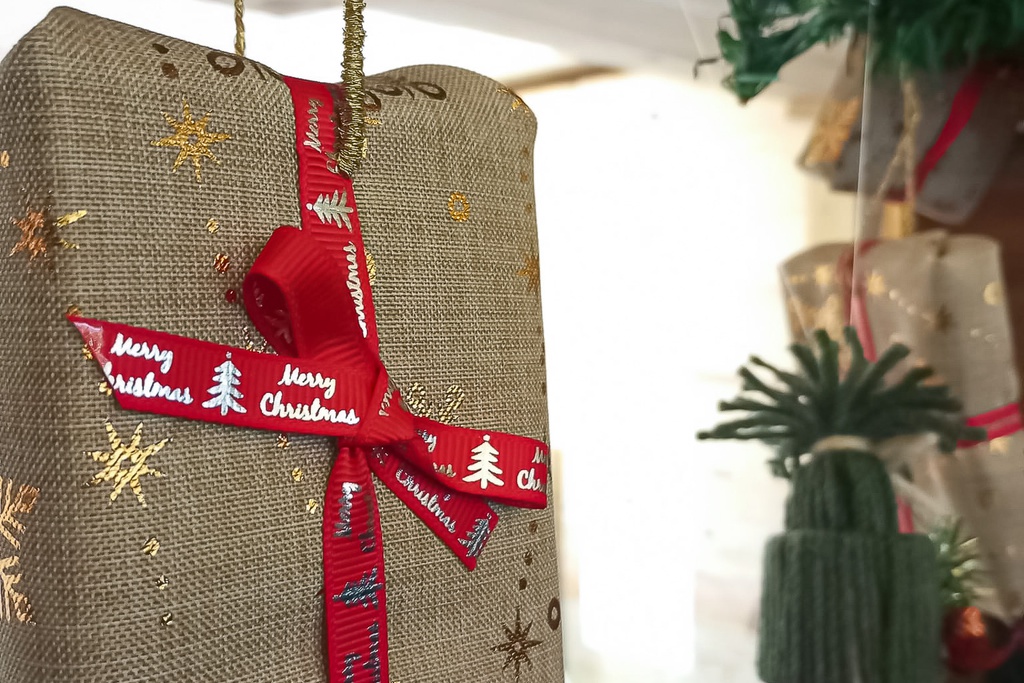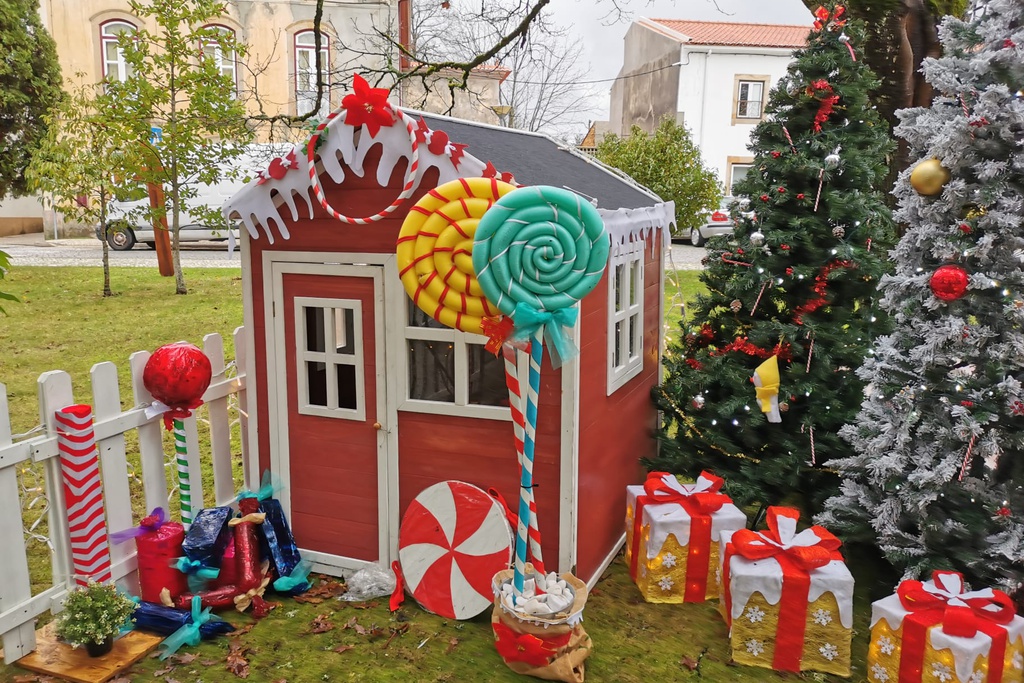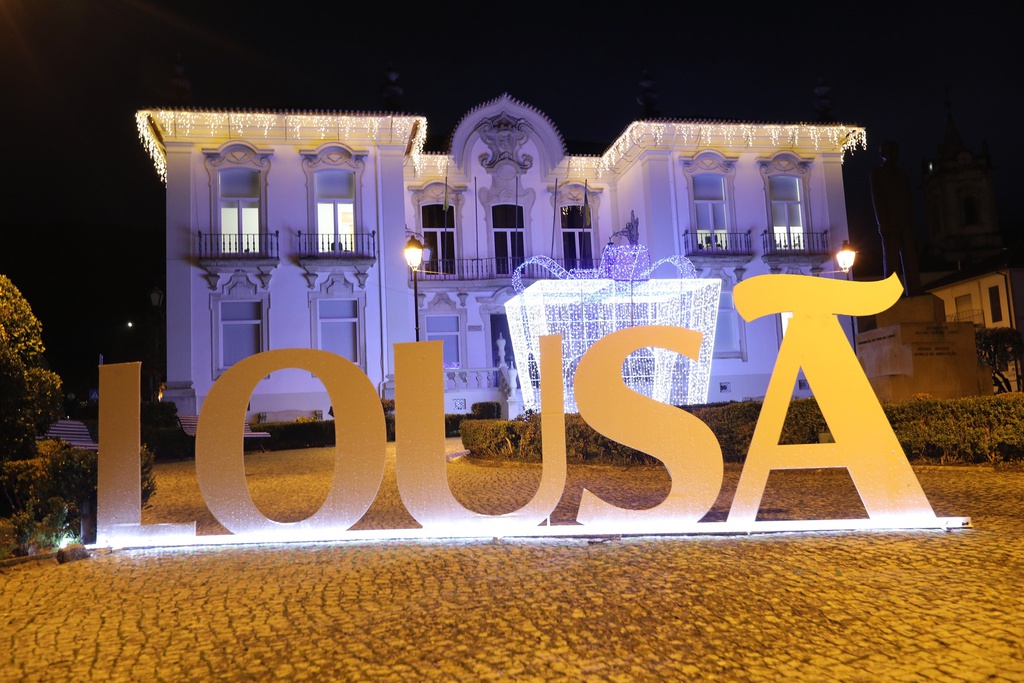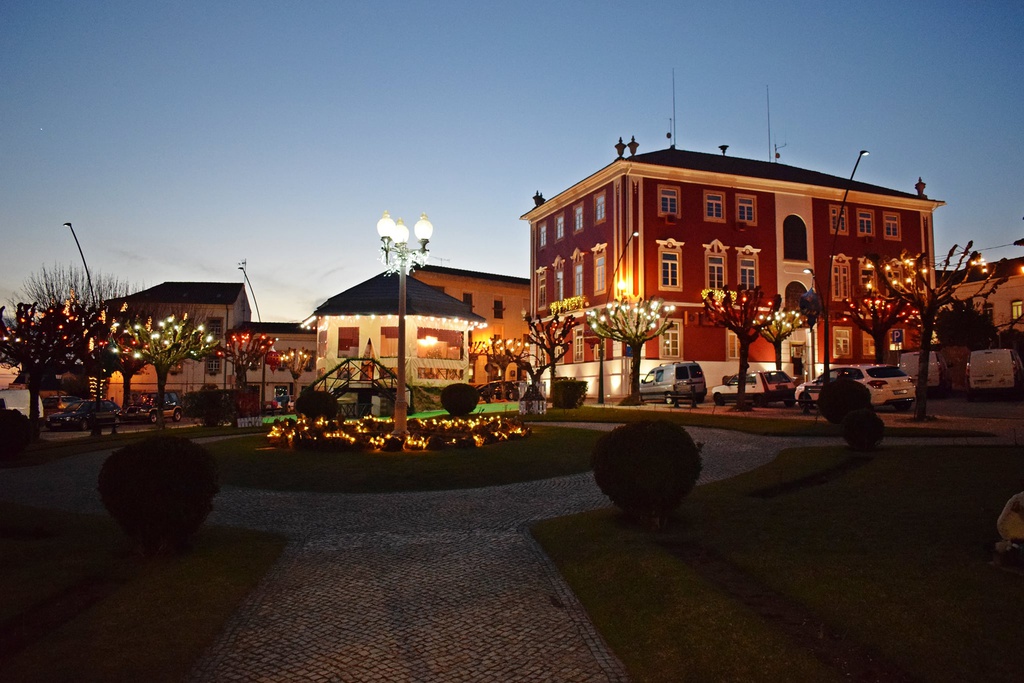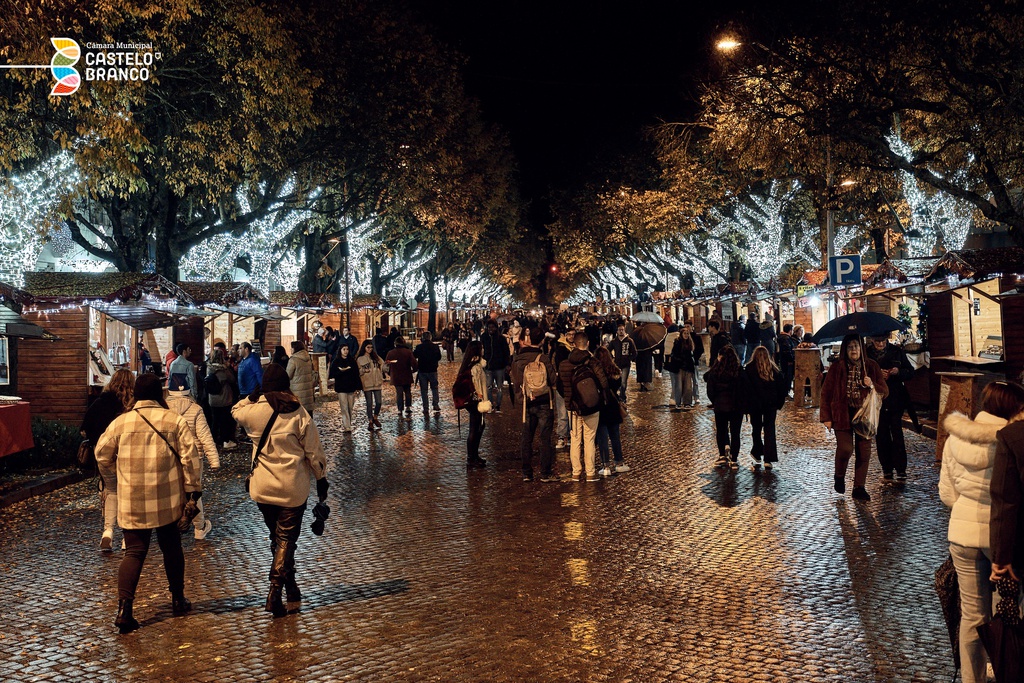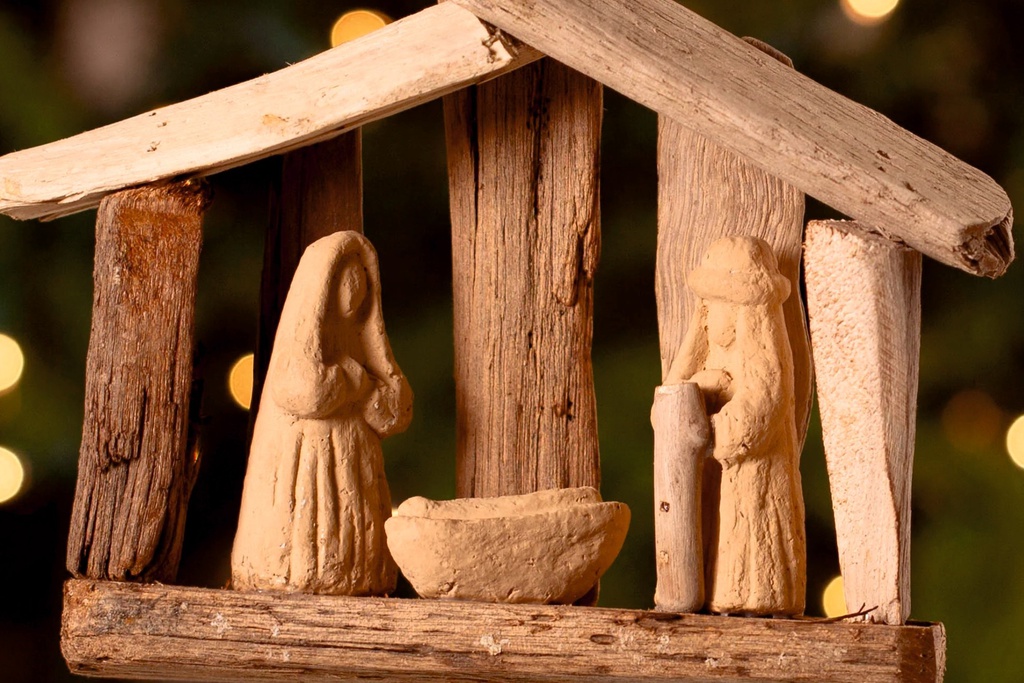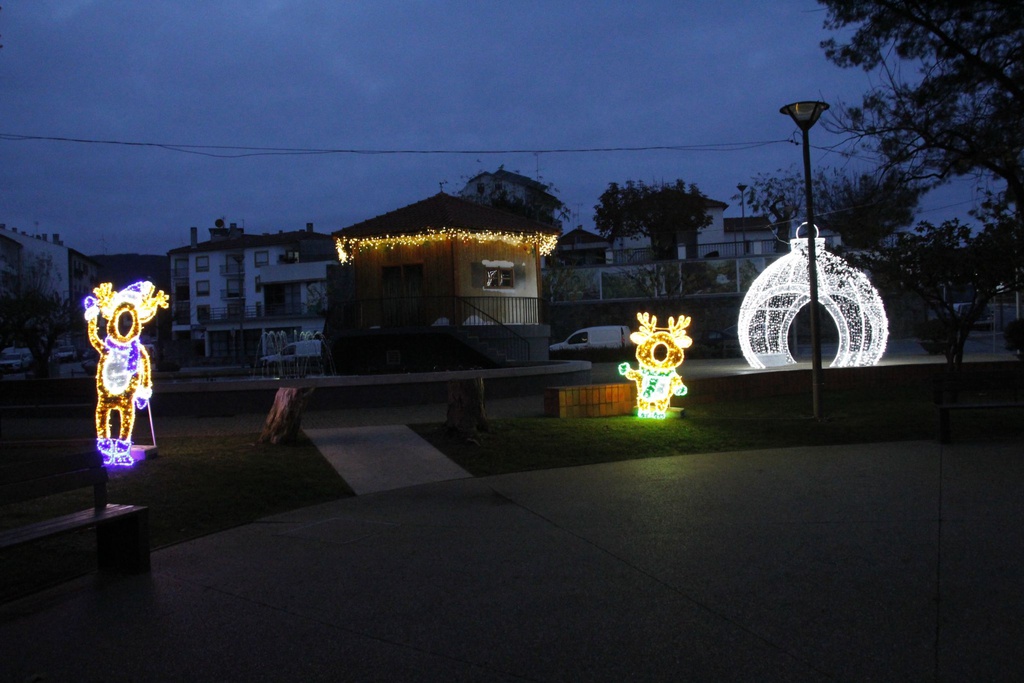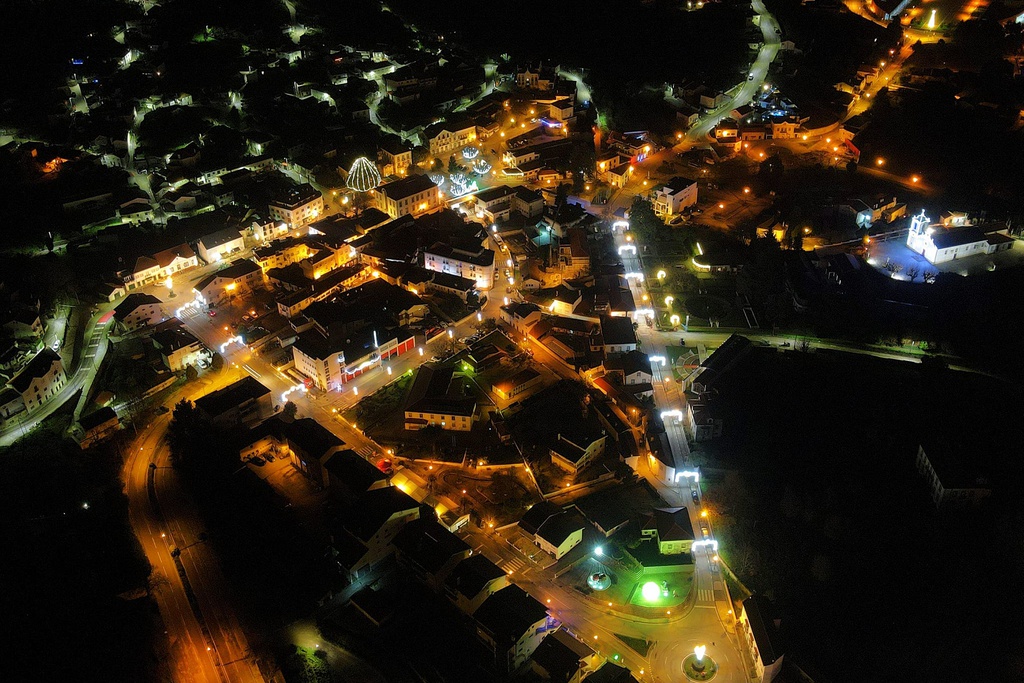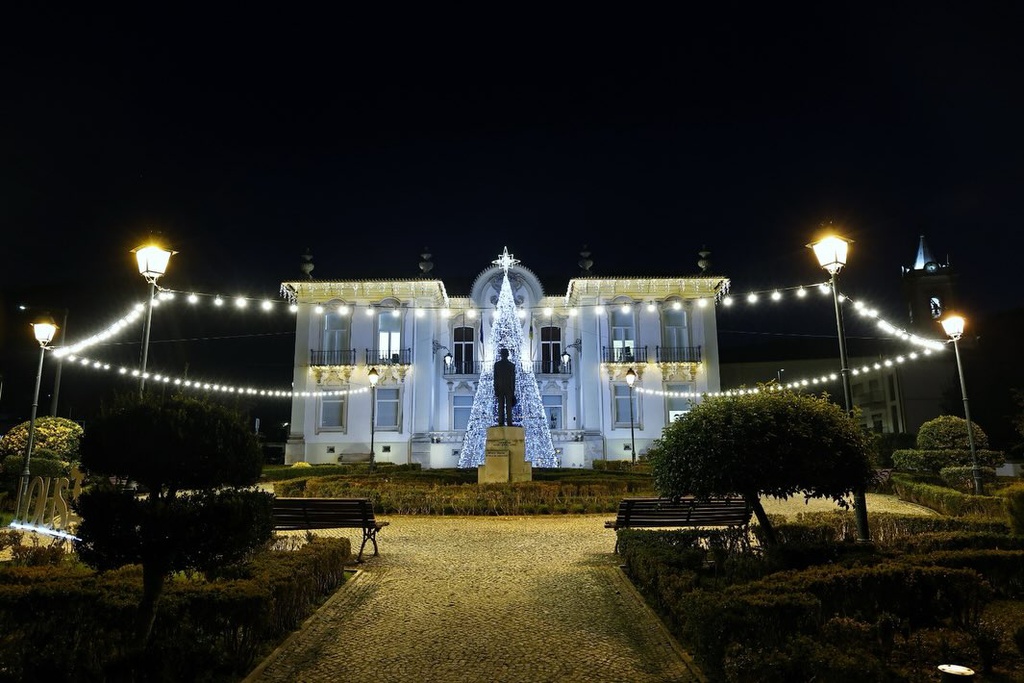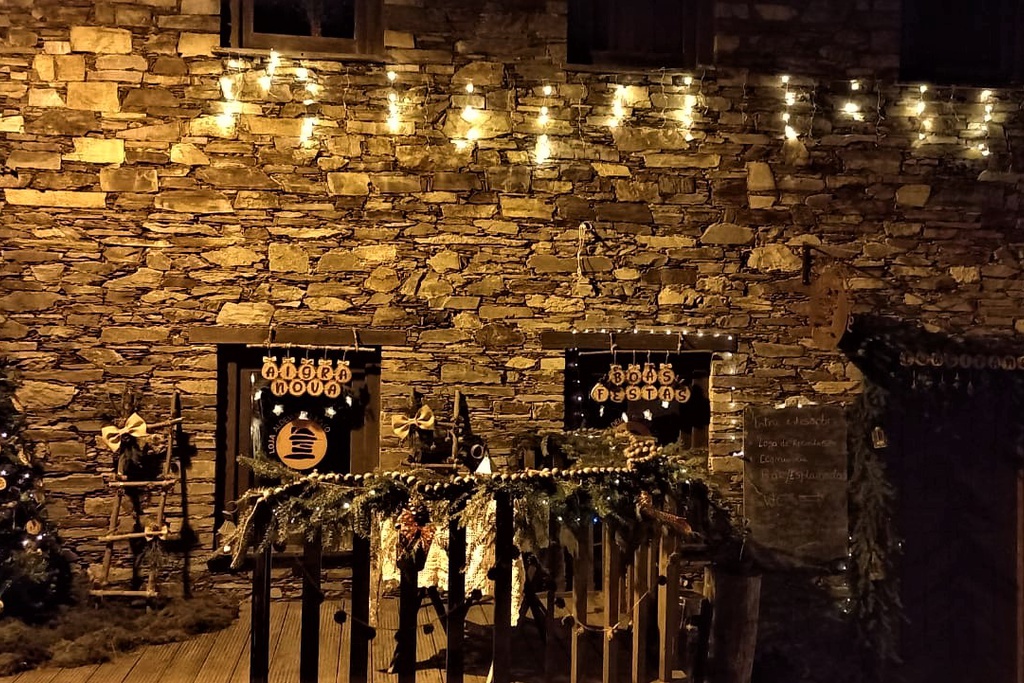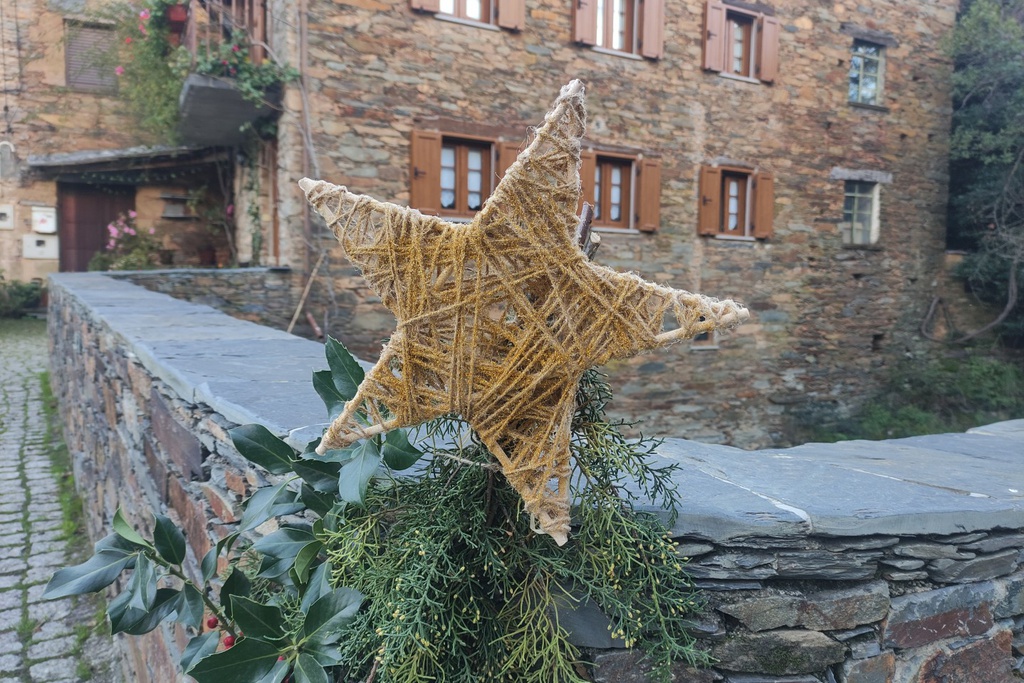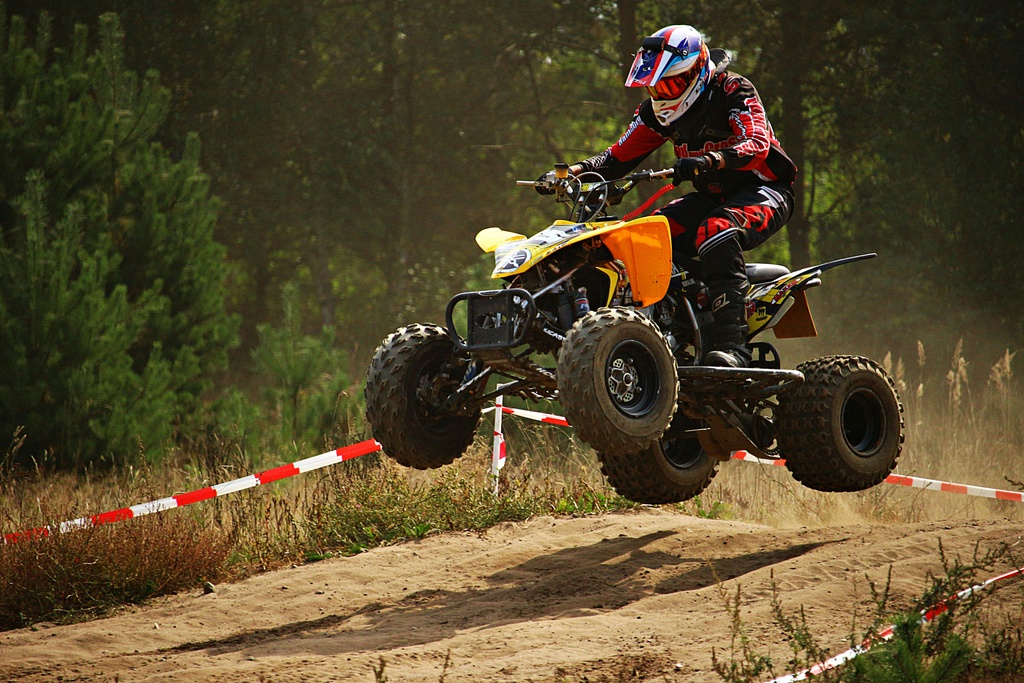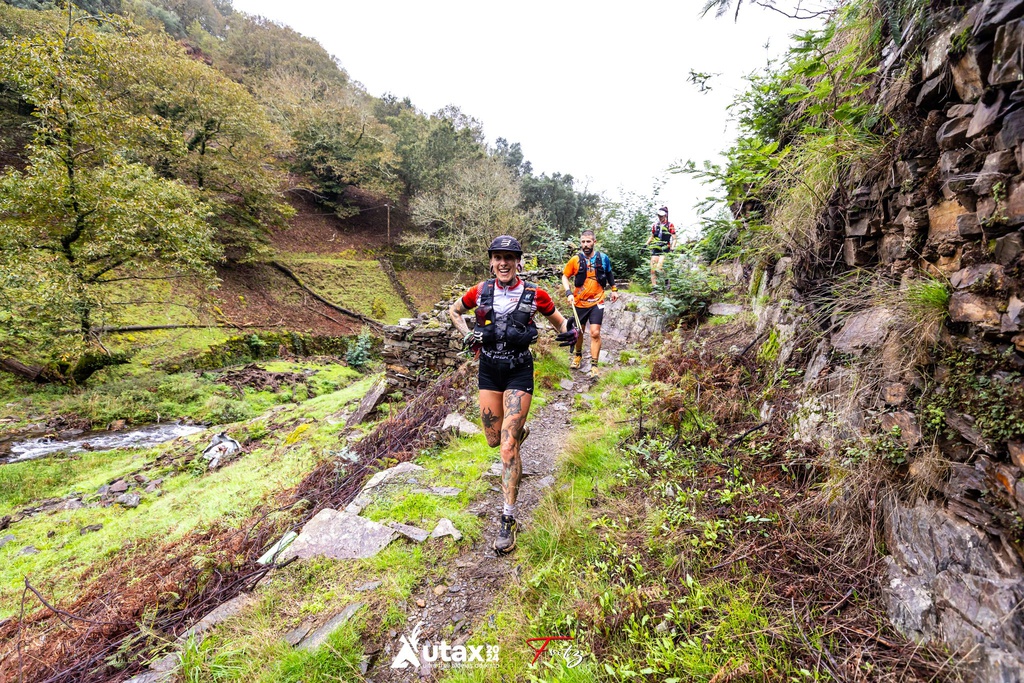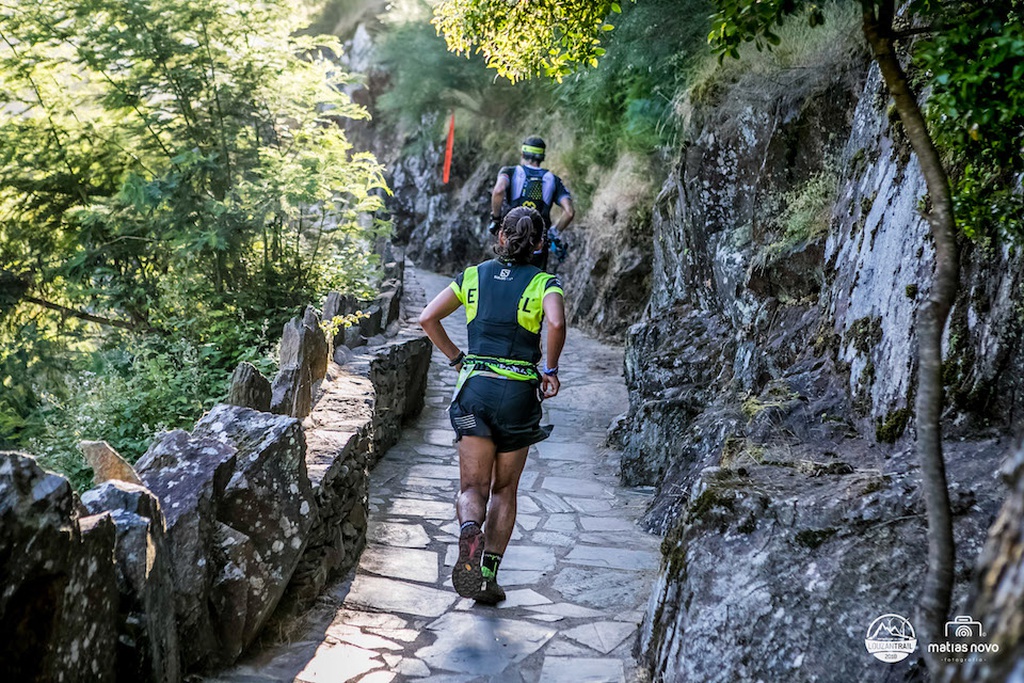The Traditional Lent in the Aldeias do Xisto of Góis takes place every year at carnival time, when you can still feel the winter chill creeping up on your body.
Its celebration, as simple as the customs of Portuguese traditions, is based on the “Shrove Tuesday Race”. However, to take part in the “race” it was necessary to dress appropriately, as demanded by such revelry!
In the Aldeias do Xisto of Góis, cultural ingenuity pressed by a lack of finances for materials resulted in the young people cultivating fruitful imaginations. Thus, they prepared various ways to cover their faces (in case someone unluckily recognised them) with whatever was available around the house: burlap, old pillowcases, rags, a “bee sieve” or, for the more creative and ingenious, a mask made out of cork.
Then the revellers set off for the “race” to the villages, the best part of course, and pranks were played, and almost anything was allowed, one of the highlights being the recitation of “saucy verses” about the inhabitants of the villagers, created from little stories that occurred during the year.
“The girls of this land,
They are some, but not all;
They wear ten pairs of socks,
To make their legs less small.”
In order to maintain the tradition, Lousitânea has created a set of recommendations, so as to maintain the traditional rigour when celebrating this tradition.
SET OF RECOMMENDATIONS
As such, based on the oral records of the local population, in order to participate in the “Lent race” it is necessary to observe the rules of participation if you want to be in the group of revellers. Learn here how to make masks, the costumes and ornaments.
MASKS:
Setting off for the hills in search of some older cork oakwas part of the process, with the aim of finding a piece of cork with a shape that would provide a diabolical and horrifying face, as money was a scarce commodity and it was necessary to be creative, and start out from what was not at hand! For those who produced honey, an old disused hive would do perfectly!
After having the piece of cork necessary to cover the whole face, there came another moment of creativity: embellishing the mask, and look for old clothes to cover the rest of the body (the men liked to dress up as women) and almost anything would do.
- The masks would always be made of cork, depicting ugly and diabolical faces. Whether in the simplest form found in the extraction of cork from the cork oak or in the use of old bee hives;
- The masks could be adorned with various items, such as goat horns,corn silk, sheep wool, deer antlers, boar’s tusks and some more discreet paintings;
- After putting on the mask ensure that the rest of the face is hidden with other types of accessories such as scarves, shawls or old rags. In the case of masks made from the use of old bee hives this will no longer be so necessary;
- The masks should he reasonably comfortable for the wearer so that it is easy to wear them for some time, with a good opening for vision, easy breathing and protected from contact with the skin;
- For a good hold on the face, it will be necessary to use good elastic bands on the masks;
- The mask should reflect the creatvity and unique character of the wearer, the more individual the better.
VERACITY OF THE CORK MASK TRADITION
There are some opinions that claim that the tradition of the cork masks never existed in the district of Góis. However, the truth is that the district has a great cultural diversity in its various mountain villages and, through word of mouth information collected over the years by Lousitânea, this subject has been accredited. While there are no written or photographic records, at least as far as is known, it was considered appropriate and essential to revive and bring back this mask-making tradition to the region’s calendar, in order to recreate it, while keeping the tradition unalterable and creating a genuine and unique brand product, thus seeking to establish a difference in the cultural identity of the Aldeias do Xisto of Góis.
COSTUME AND CLOTHES:
For a long time only men and boys took part in this merrymaking, but with the advanced depopulation of the villages these “races”, also began to include girls and women, in order to maintain the number of participants and not let the tradition die.
To make sure that no one is recognised for their “bad language” and “bad deeds” they change clothes, with men dressing in women’s clothes and women dressing in men’s.
- For this tradition, old clothes were used, the kind kept deep at the bottom of chests, some of which are worn inside out, back to front, or with undergarments worn on top of all the other clothing);
- The clothes will always be the oldest that can be found in wardrobes and chests, such as suits, dresses, scarves, shawls, shoes, boots, and gloves, among other things;
- One of the ways of identifying whether you are a man or a woman has to do with the shape of your body and the way you walk. Such that, for example, men can always create a good pair of breasts!
- Hands should always wear gloves, legs should be covered with socks, tights or even underpants, and arms should be covered with the sleeves.
ADORNMENTS:
- They should use accessories that make a noise, such as, for example, rattles, bells, and so on.
- Use a walking stick, staff, an old umbrella and so on.
- Some of the old instruments used in the dances and which are already out of tune, like a concertina, a drum, a box, a reco-reco, among others.
- Some of the members may use large old metal funnels (that were used in the wine presses and cellars) to sing some “Merry Verses”.
- In their pockets they can carry “acorns” to throw at people.
How traditional Shrove Tuesday was spent
Early in the morning, bizarre characters dressed in old clothes and wearing painted cloth masks appear on the streets of Góis. One of them imitates an old lady, wearing a shawl and cane, but the lightness with which he approaches passers-by betrays his age. And the beard betrays the gender. However, the first reaction of passers-by is a complicit smile, and some even play along. As they say: it’s Carnival, nobody takes it personally.
The Traditional Lent Carnival Celebration of Serra da Lousã Villages begins in Góis, where a small group of people join the Lousitanian revellers. The Liga dos Amigos da Serra Lousã is committed to reviving carnival traditions, just as they used to be celebrated in the Aldeias do Xisto.
In the old days keys were often left in the lock on the street and we would put a stick through it locking people inside, who sometimes had to go out through the window.
In Comareira, ’Ti Alfredo’ tells us that in his time they also used to play Carnival games: “In the old days, people would often leave their keys in the street lock and we would put a stick through it, locking people inside, who sometimes had to go out through the window”.
This was not one of the pranks engineered by Lousitânea, but there were others that, when we arrived at Aigra Nova, intrigued its inhabitants. They told us, with a wry smile, that piles of wood had appeared at their front door blocking their way, and that in some mailboxes they discovered clothes drying on the clothesline during the night.
They had fun remembering that there hadn’t been so many Carnival games in Aigras for a number of years. Already complicit in the prank and instigated by the masked revellers, who “suspected” that the inhabitants of neighbouring Comareira were responsible, those from Aigras promised revenge for next year: “Maybe we’ll park a cart full of dung at the entrance to the village”, they said, provoking general laughter.
JOIN THE WHEEL AND DANCE!
Lunch is a delicious chanfana offered by the Aigras Committee. The atmosphere is relaxed and full of complicit pranks among revellers. They are joined by a group of concertina players and the dance begins. First in the Committee shed, with masks already changed and skirts worn over trousers. Jumping around the streets following the enchantment of the music, the group gets together in a circle in the Village square. Everyone dances hand in hand. And so they continue, even when Manuel Claro spontaneously decides to lead a wheel through the streets of Aigra Nova, followed by concertinas that encourage more jumping and takel your breath away with laughter.
At the end of the day, when the body is begging for a rest, the best way for it is with a relaxing walk through Aigra Nova and Pena. Dusk picks out the landscape’s profile, abrupt and Prehistoric at the cliff level, but also deeply rural and human at the ground level. Today, on that ground we trod, it was Carnival day.


